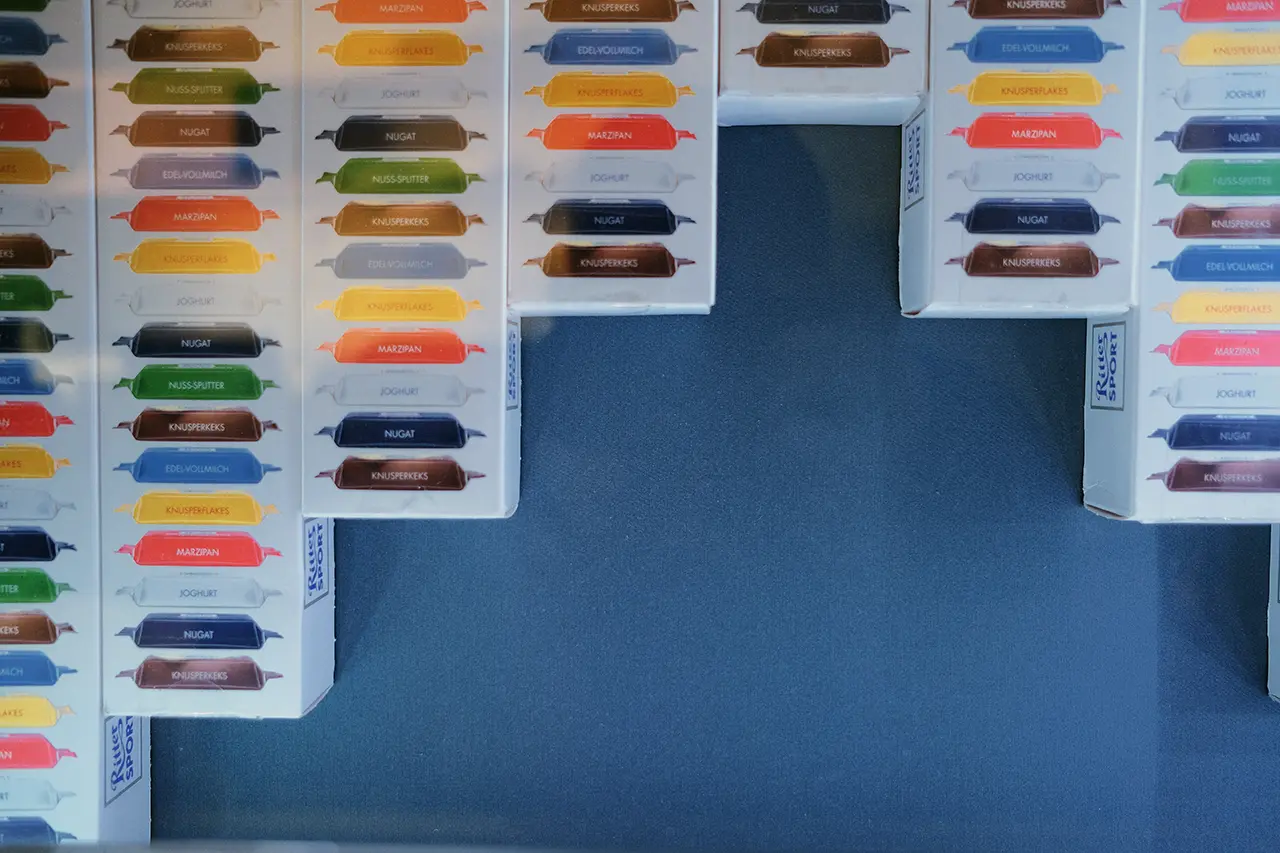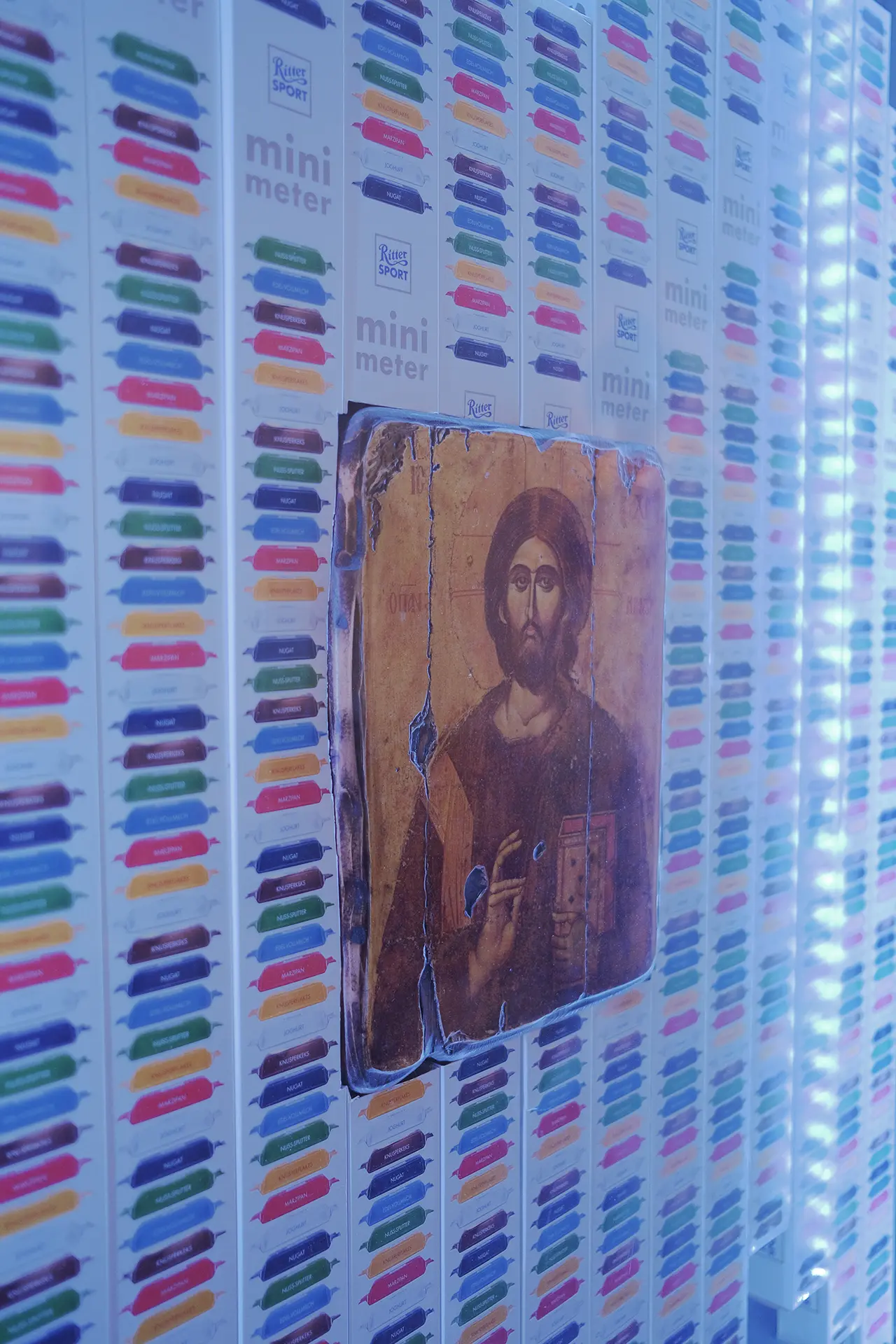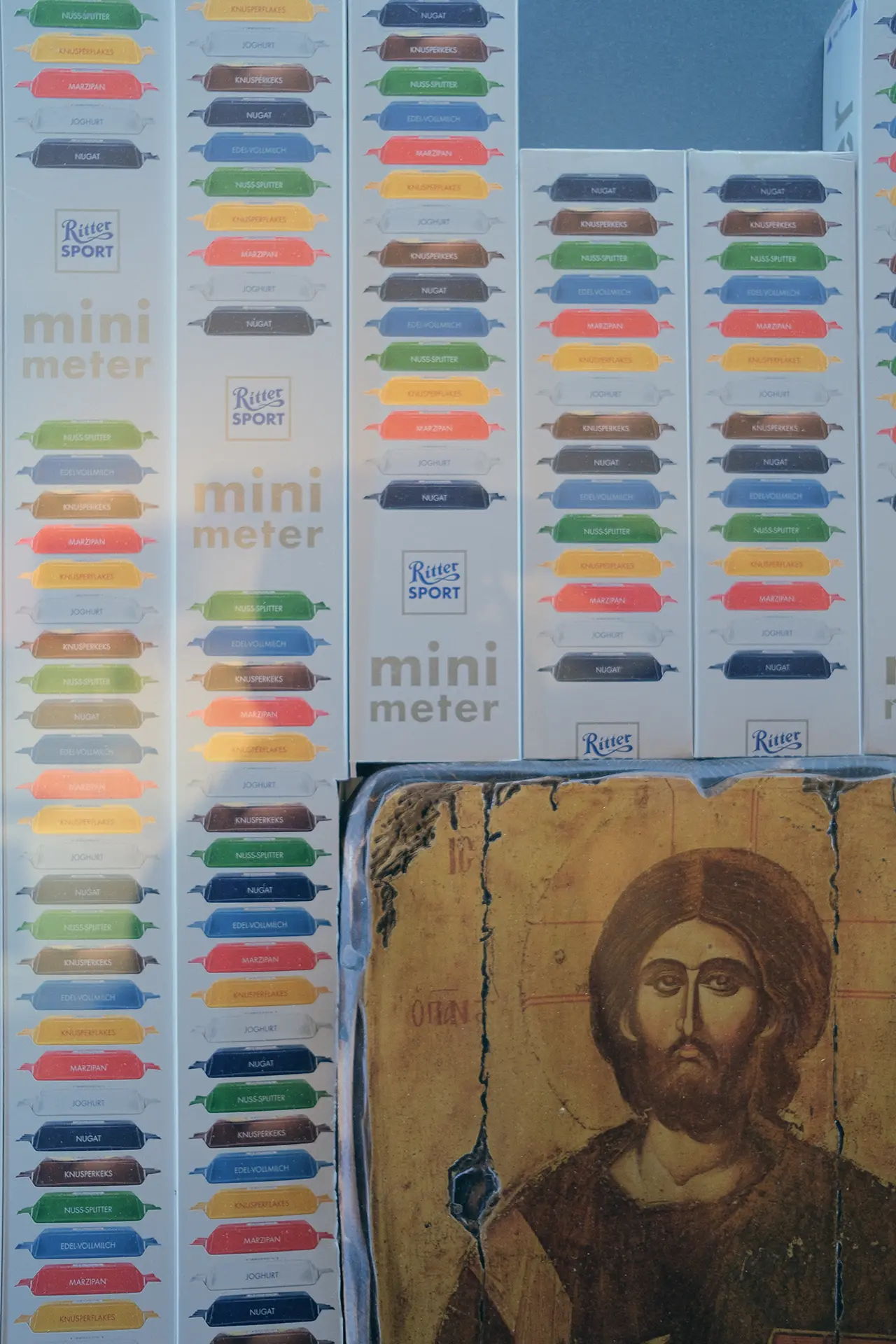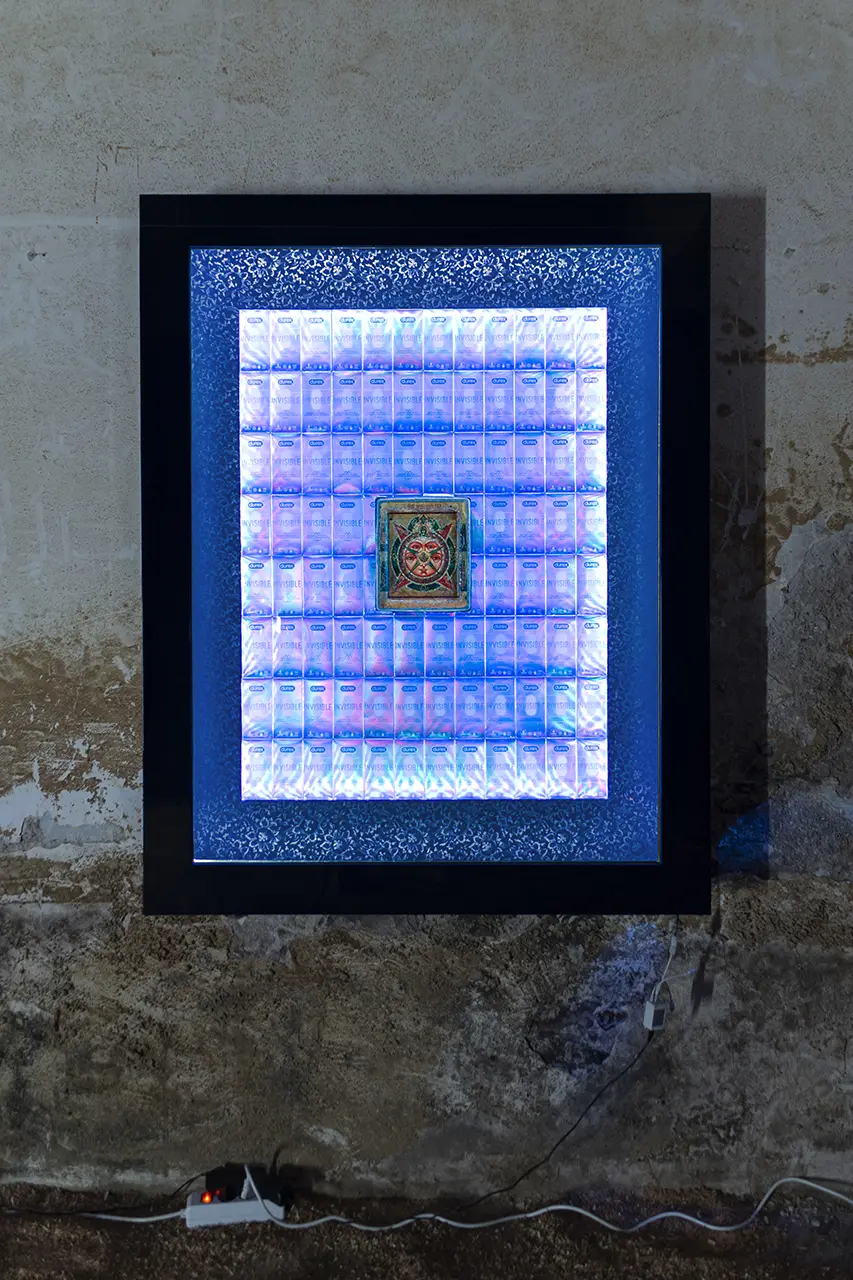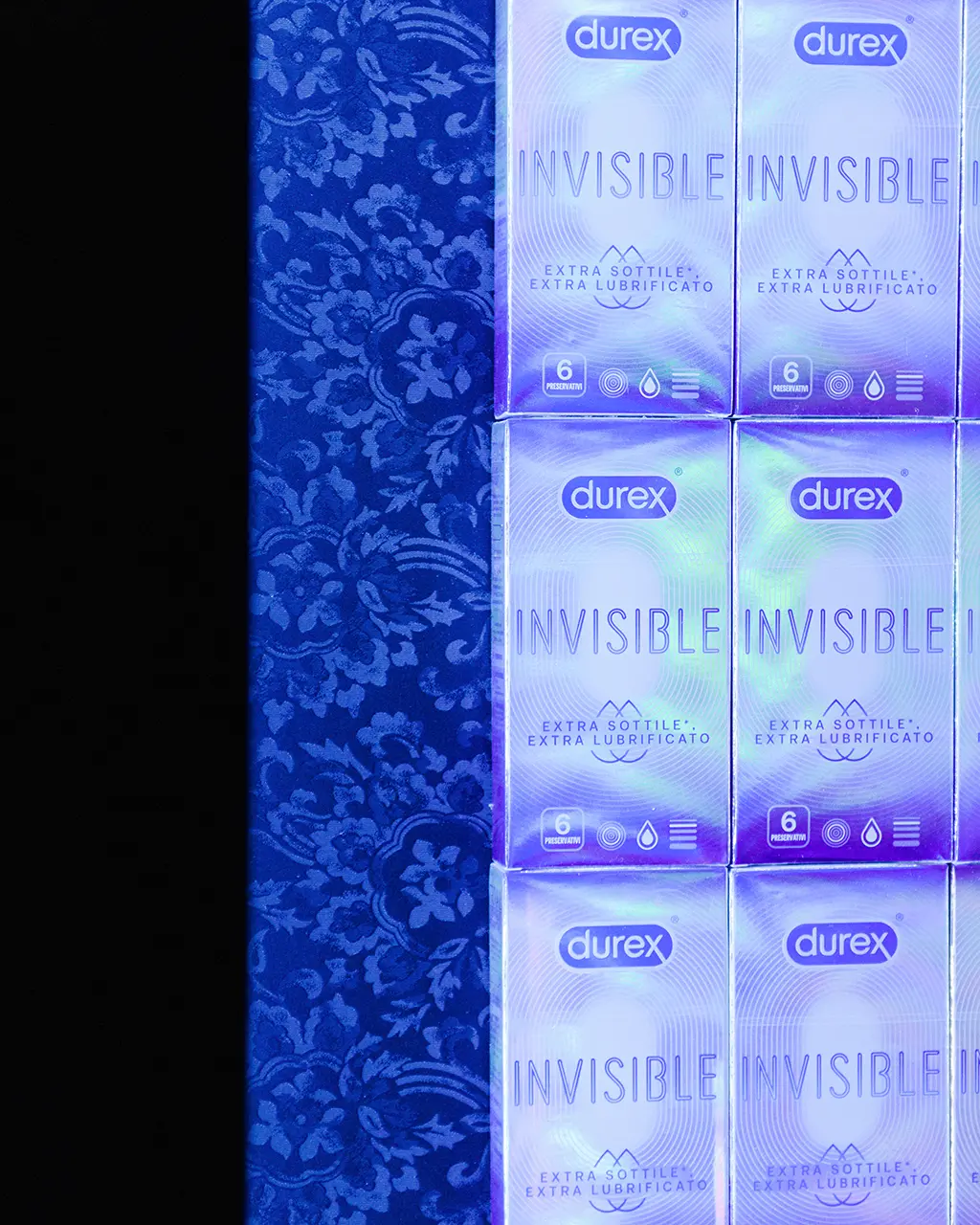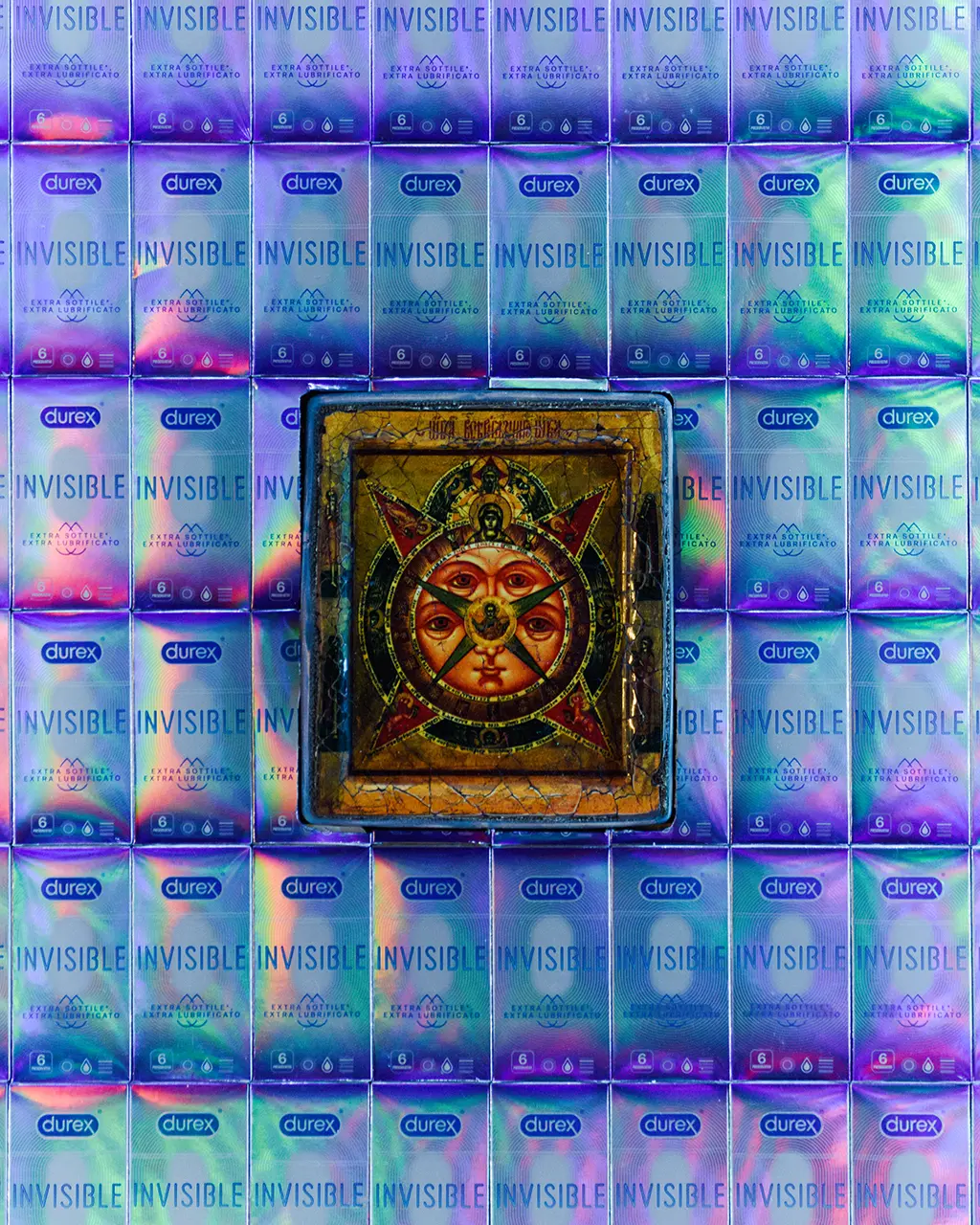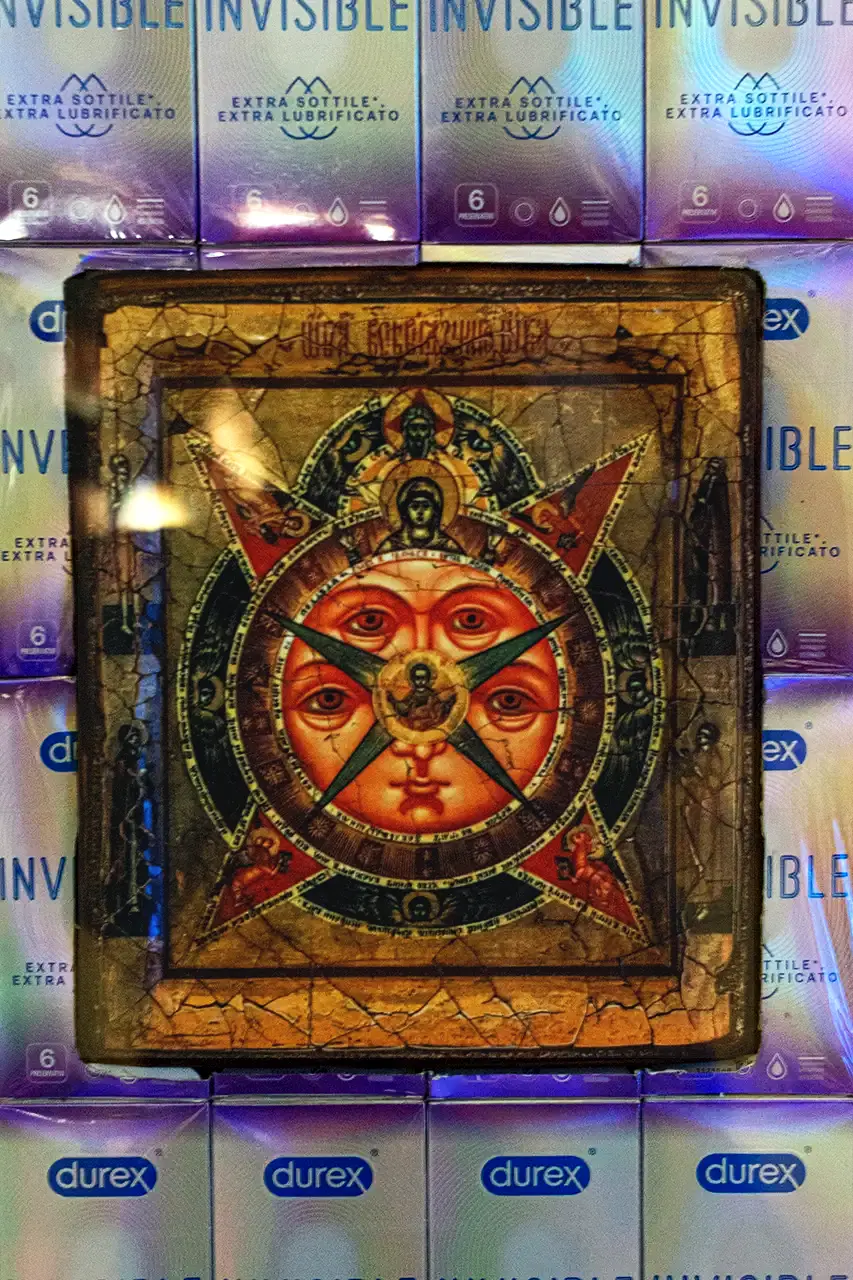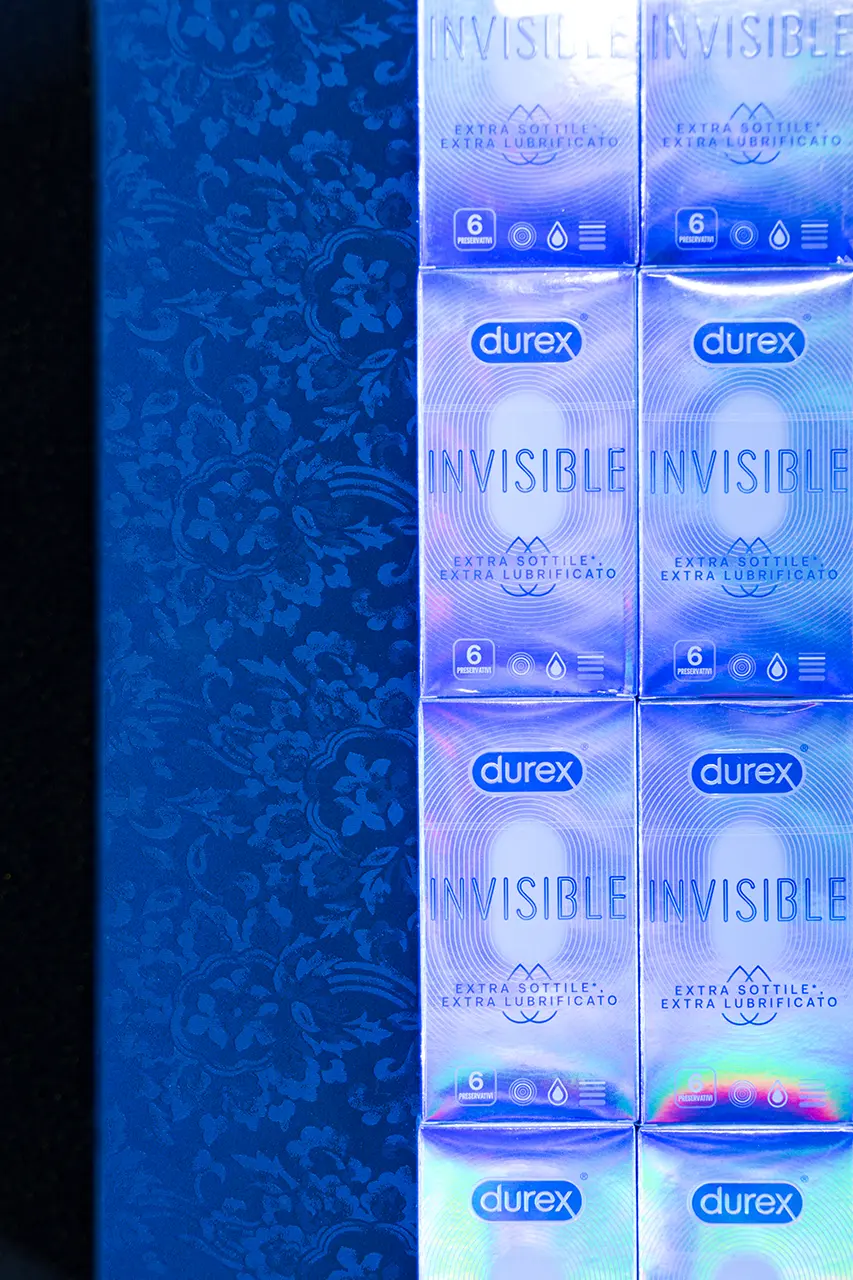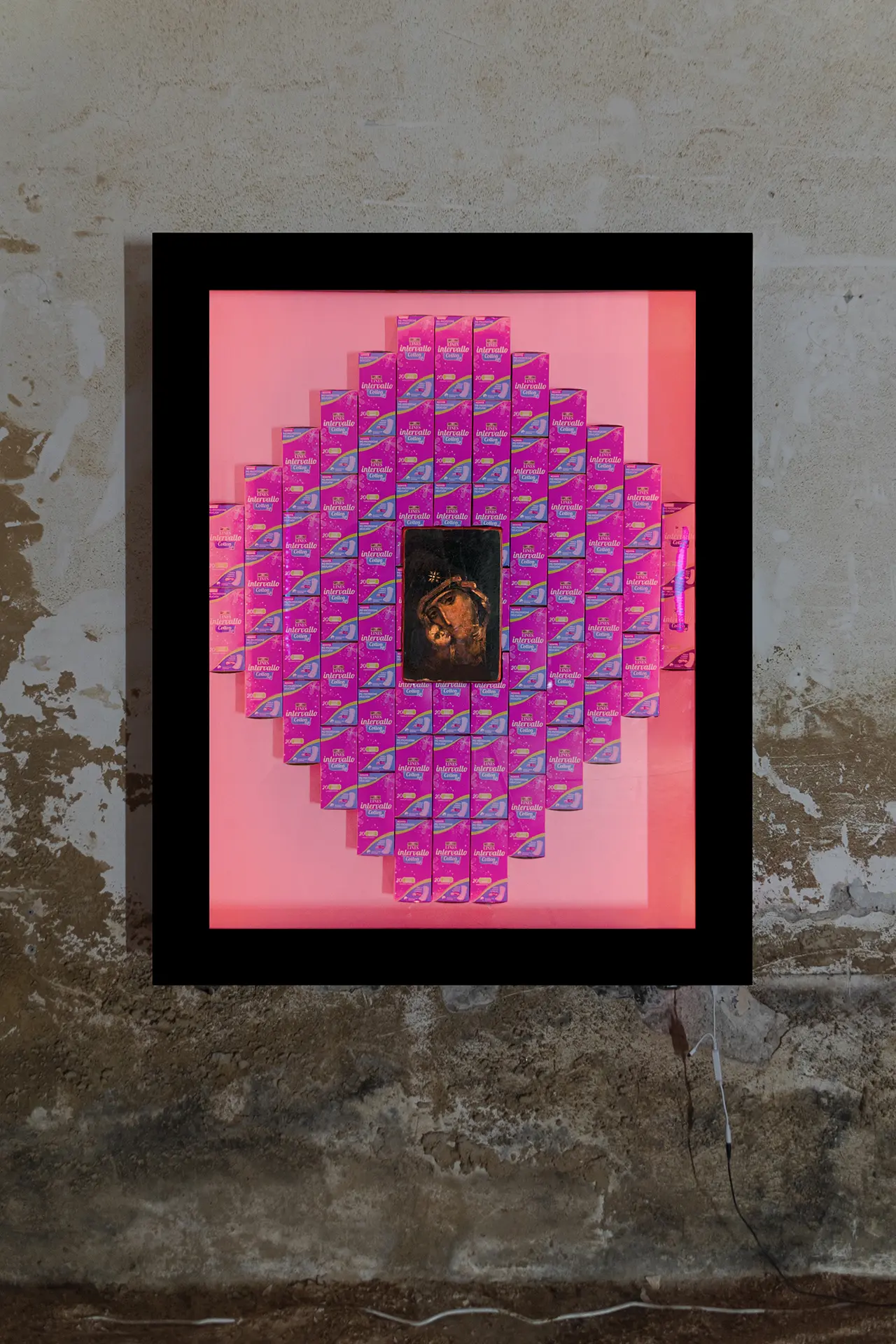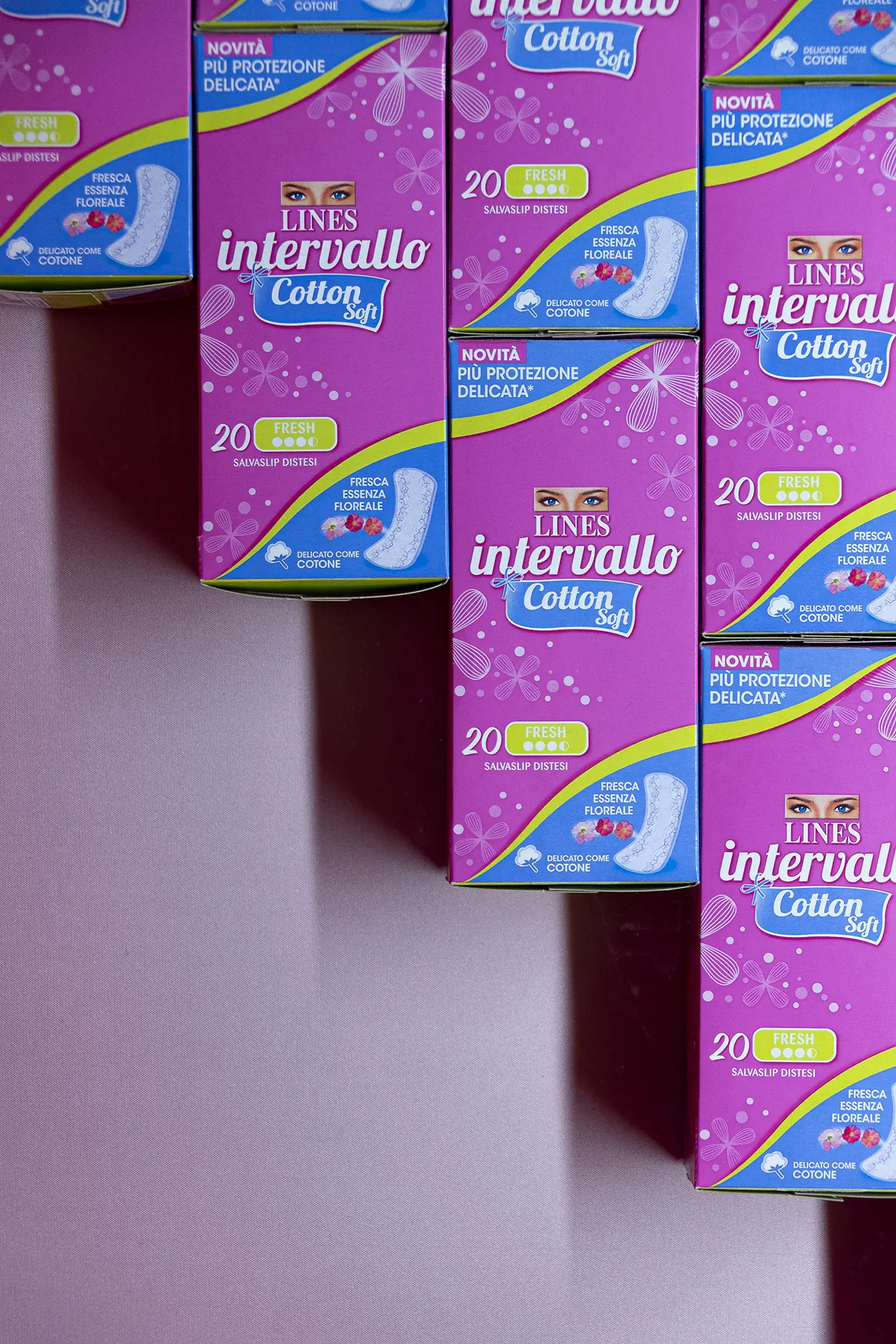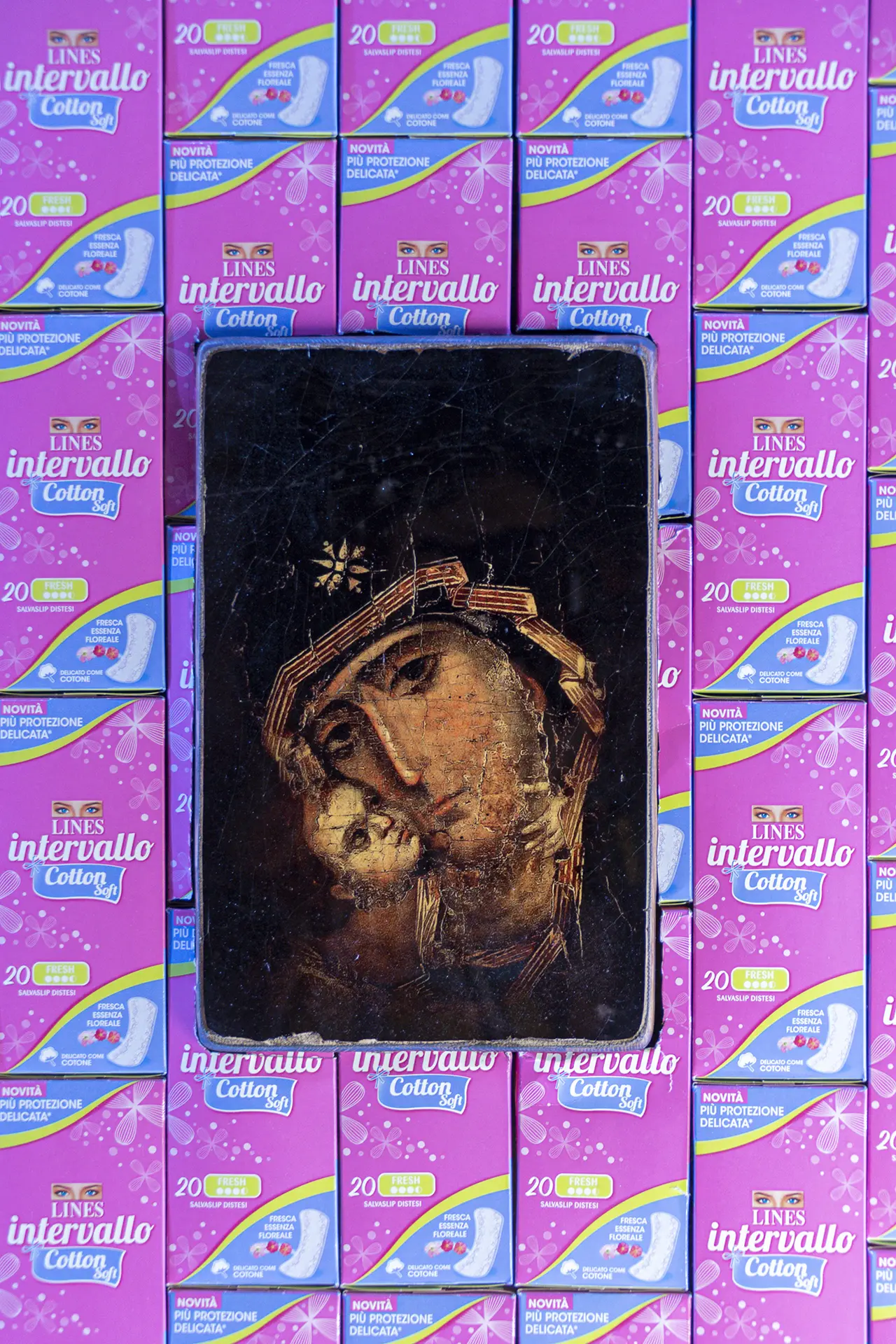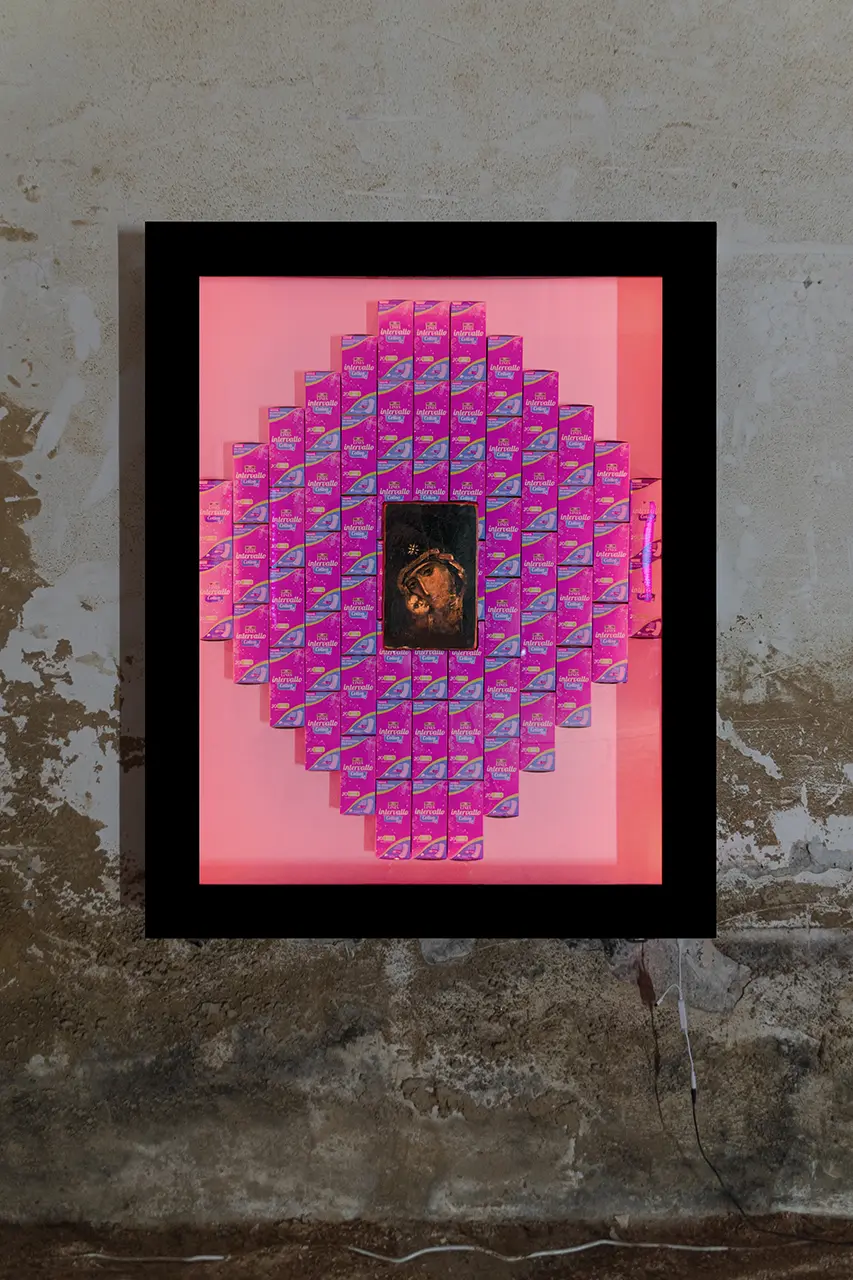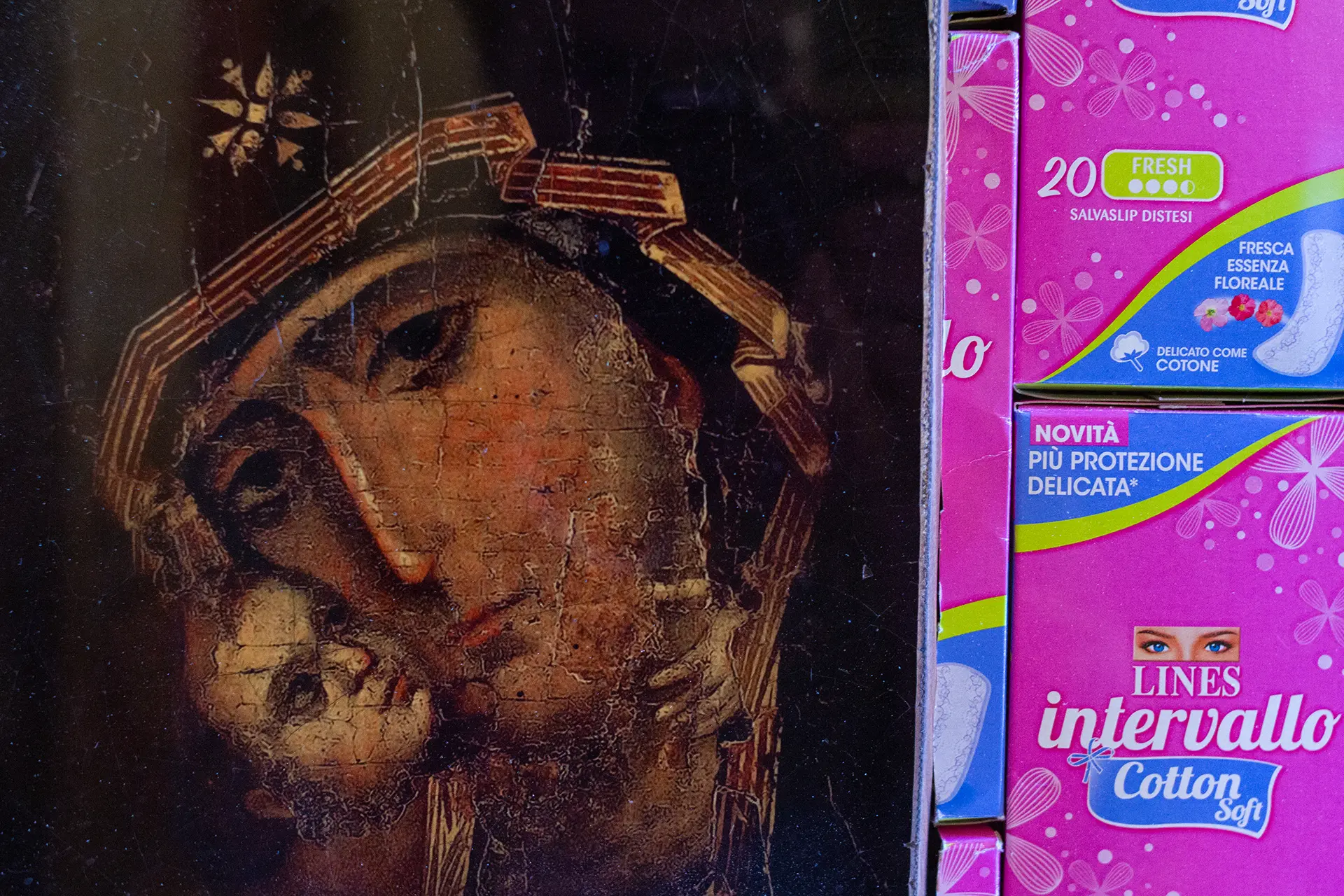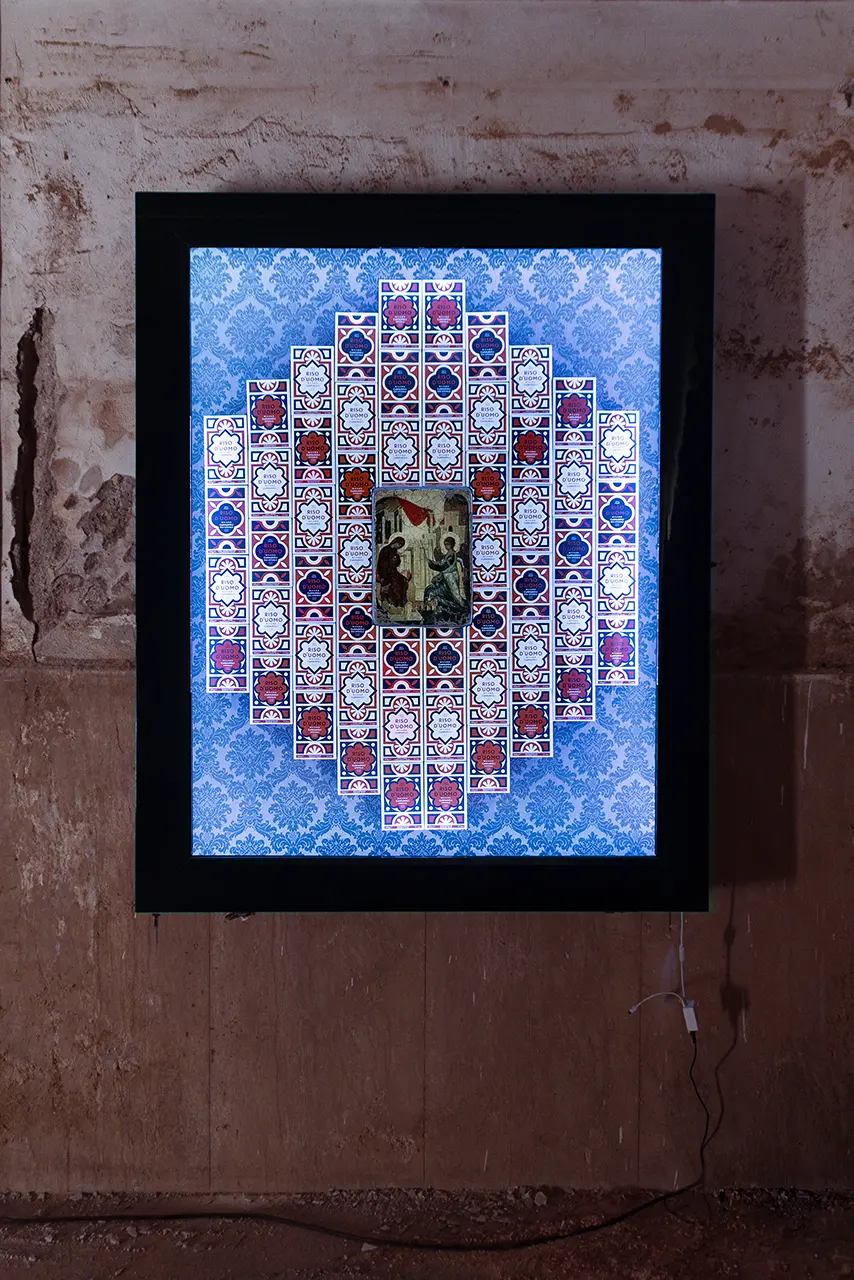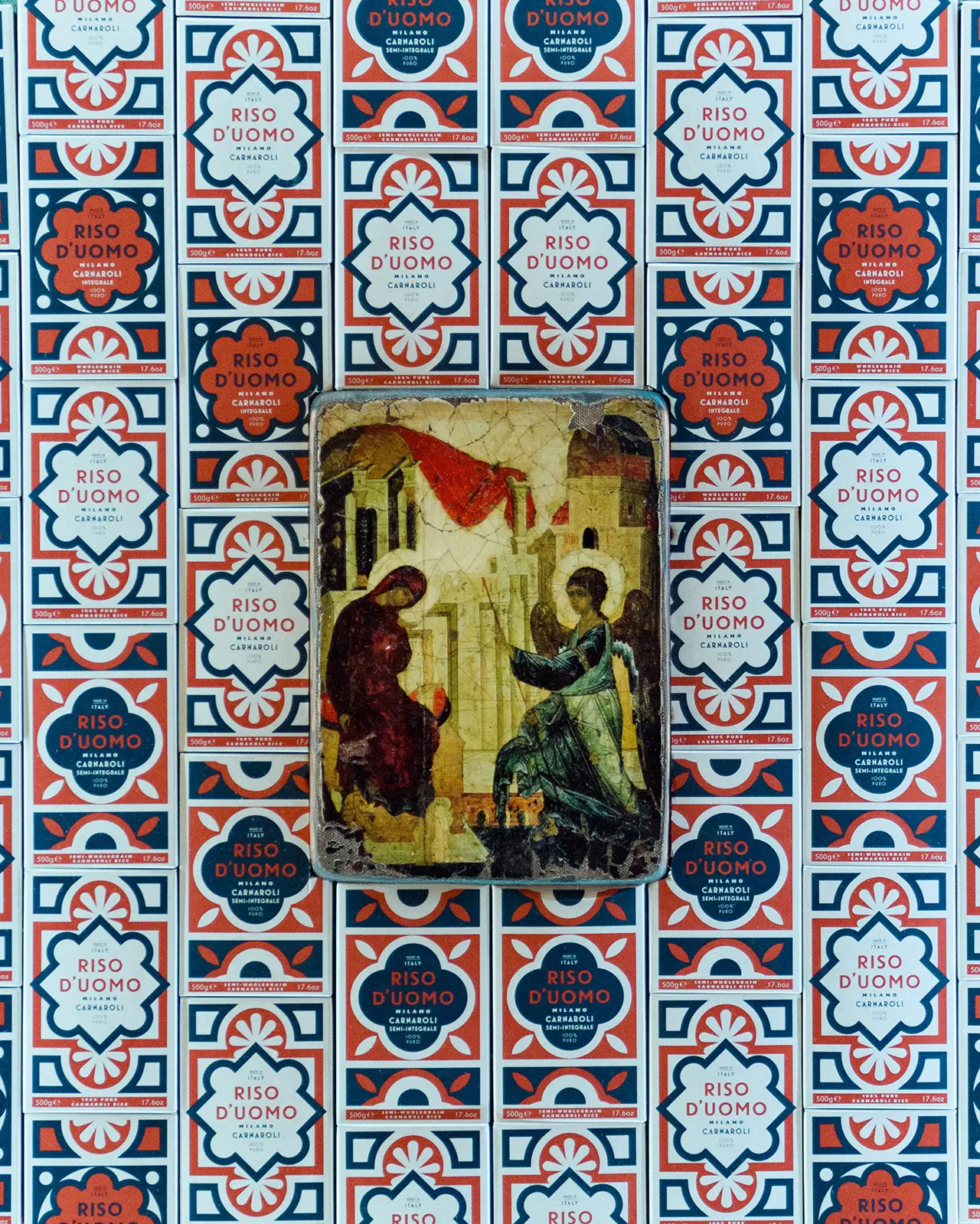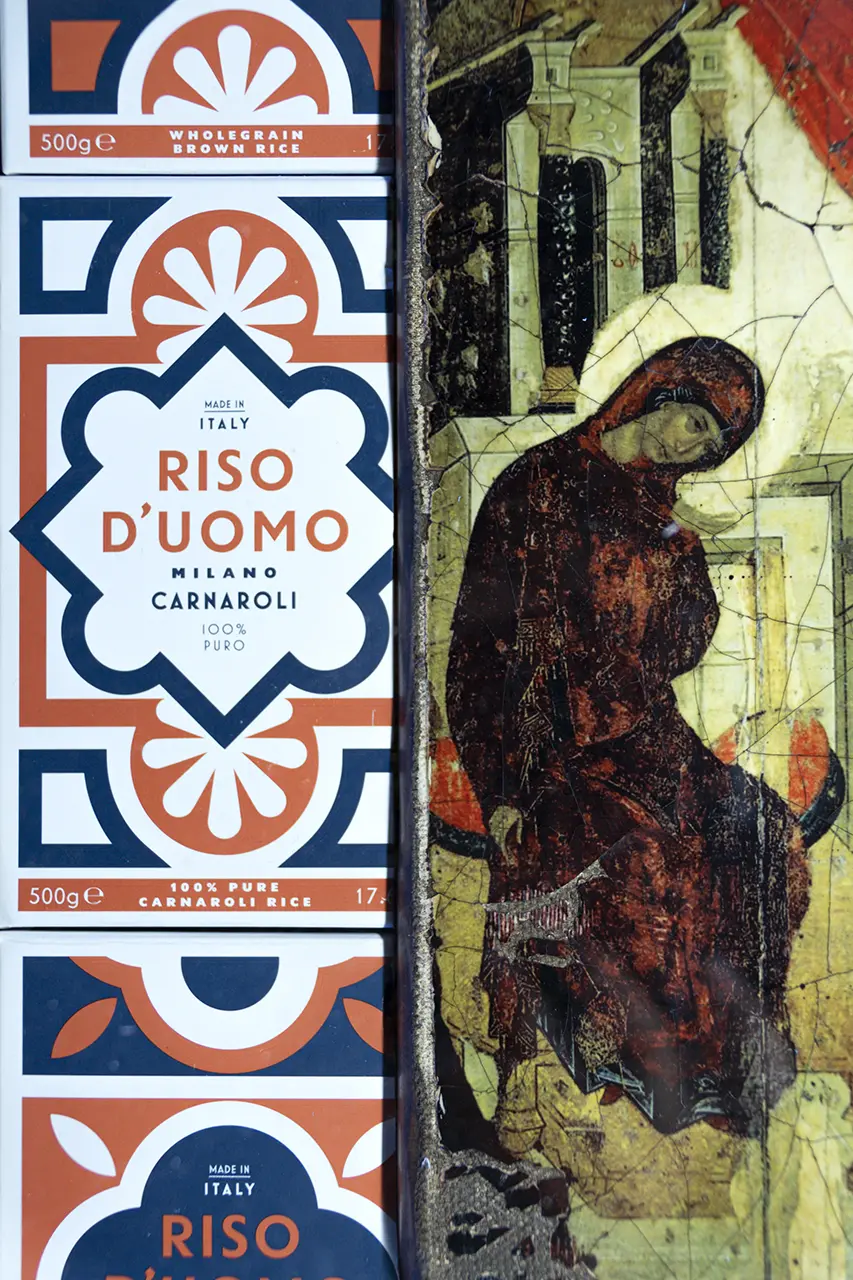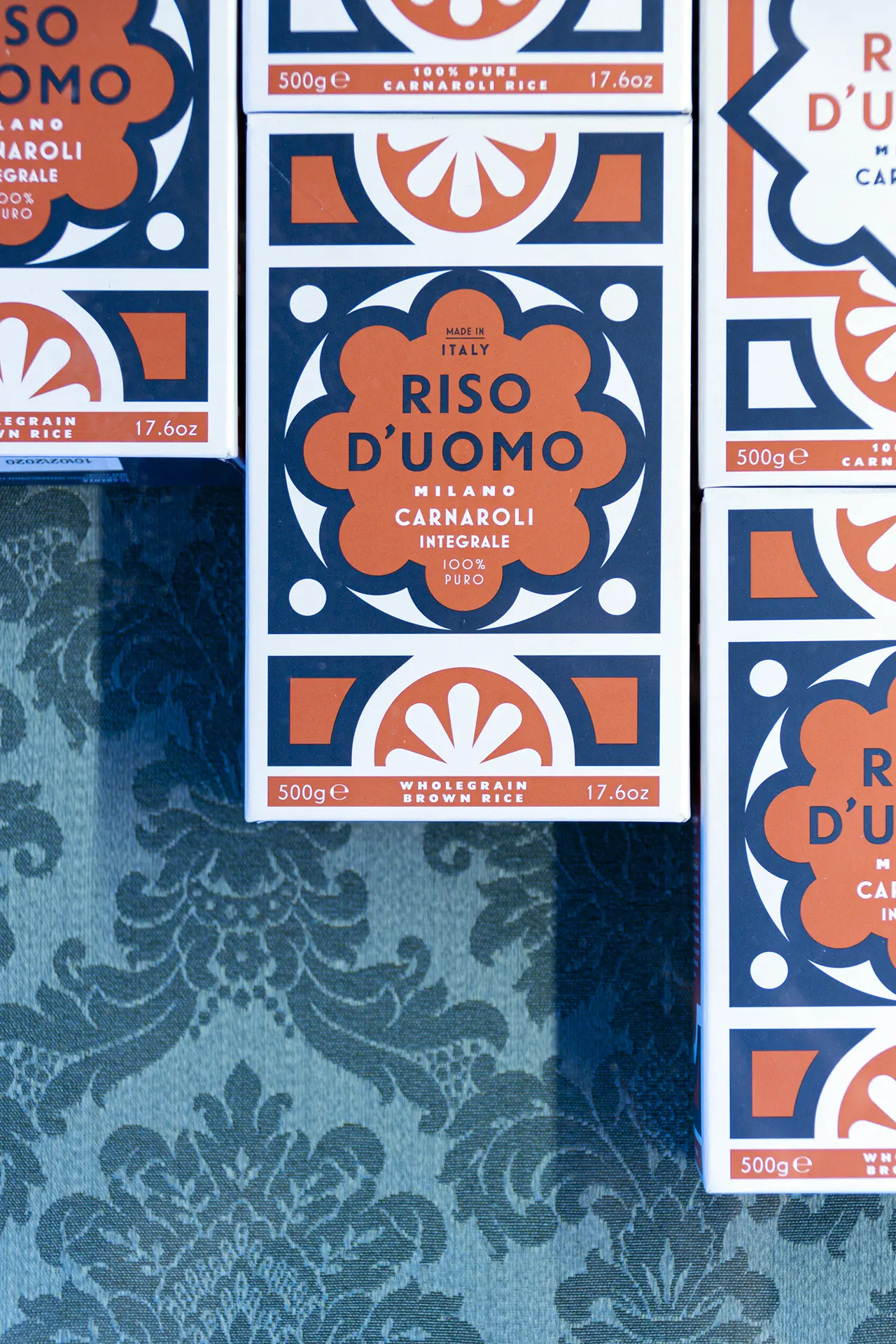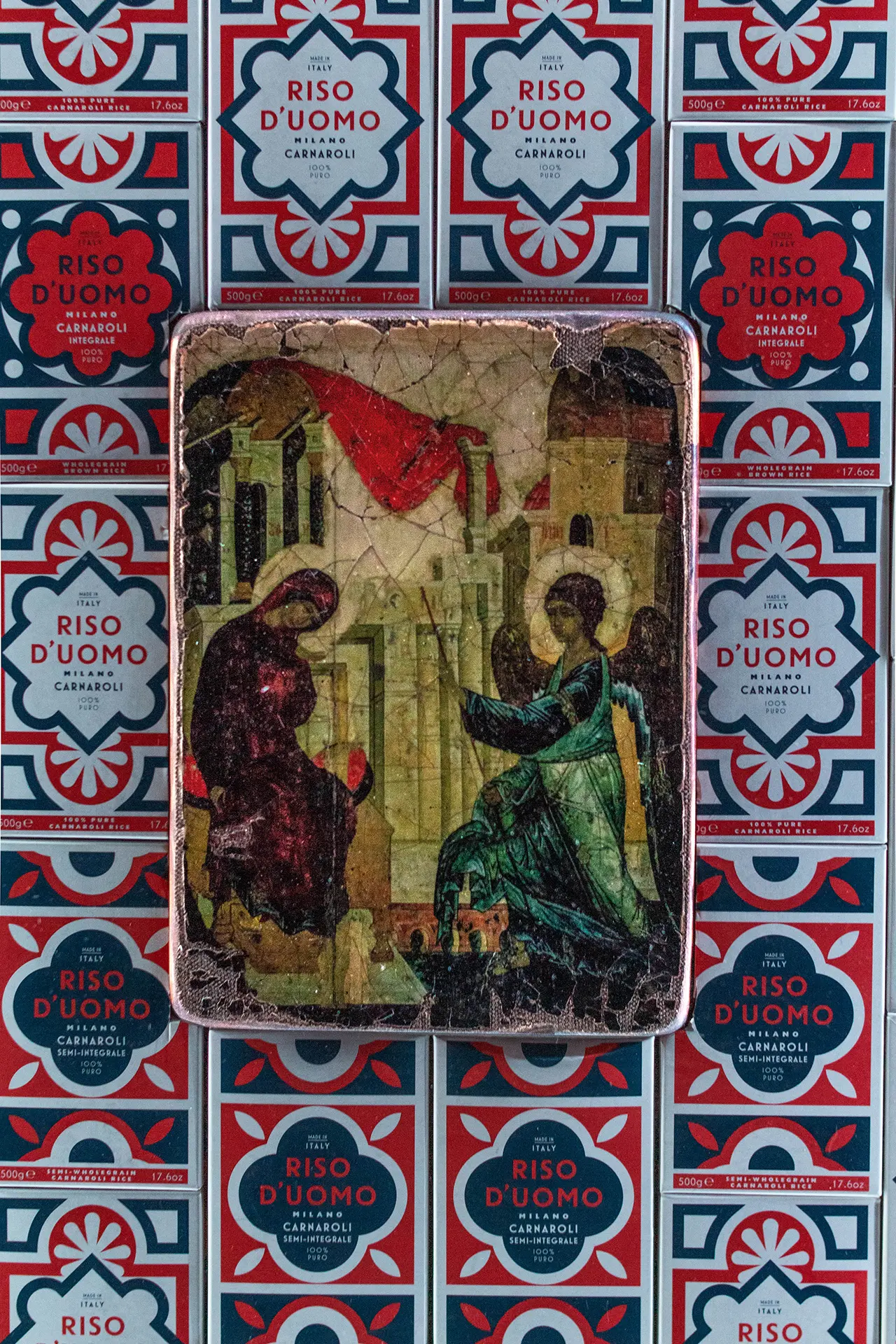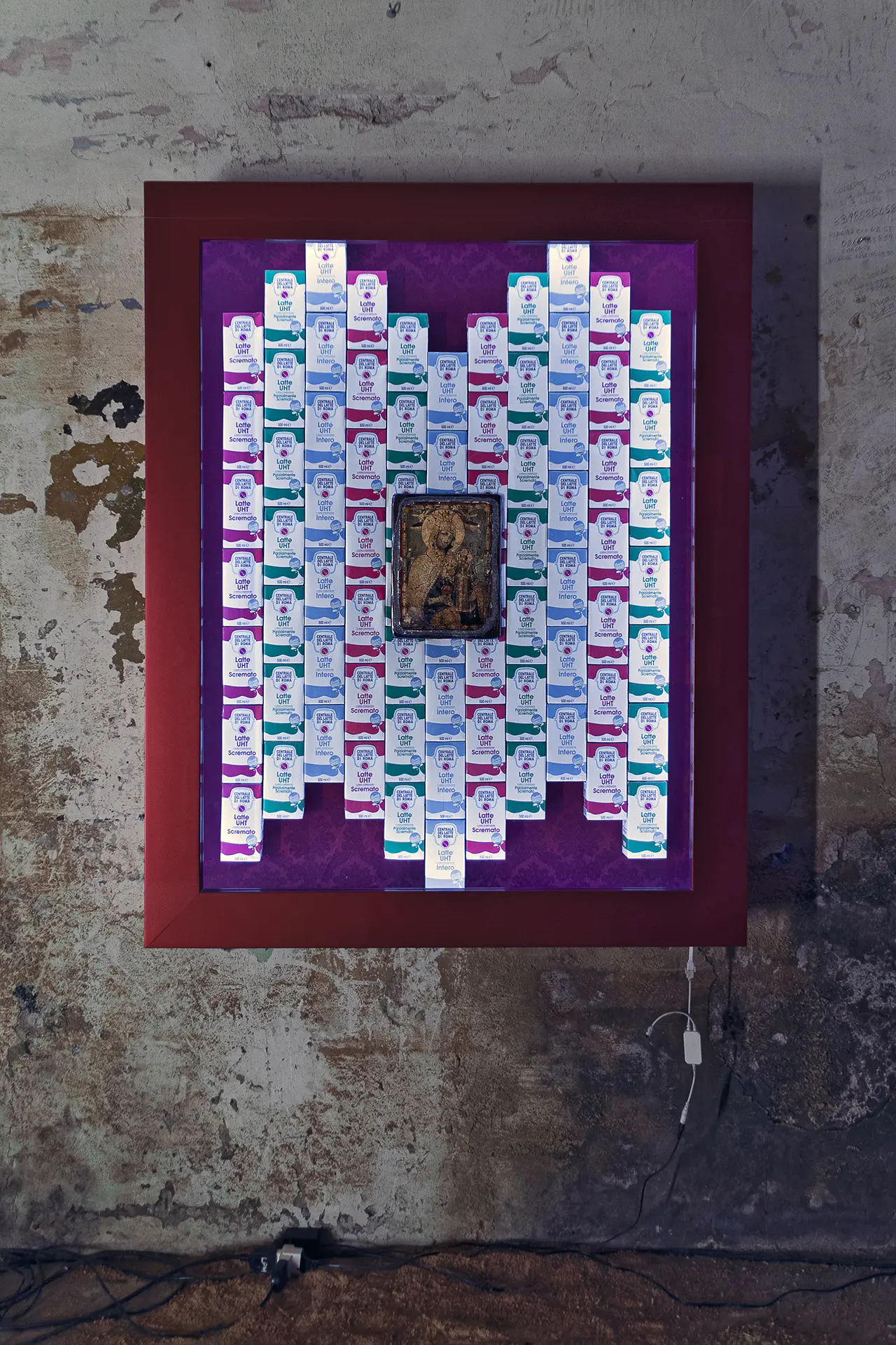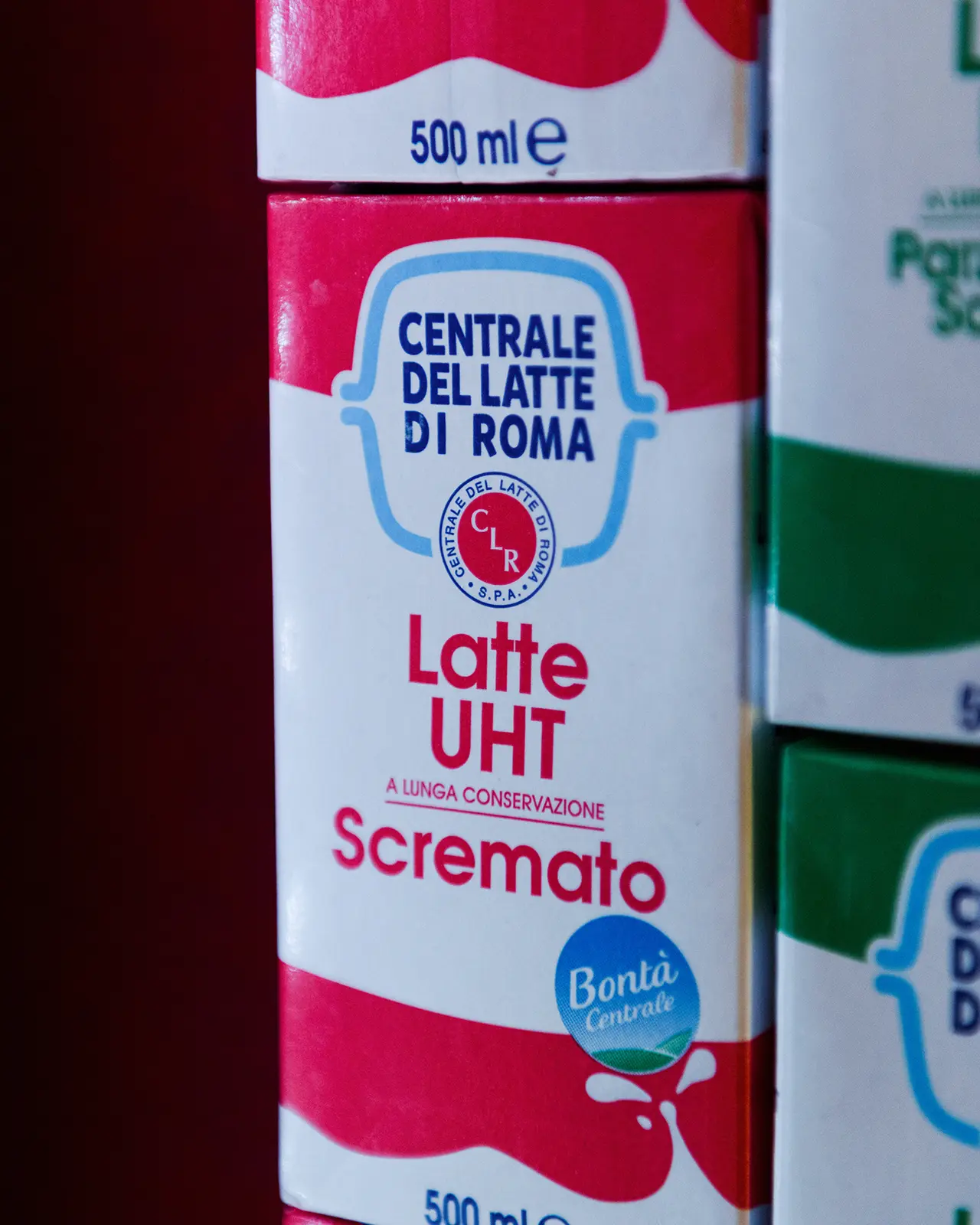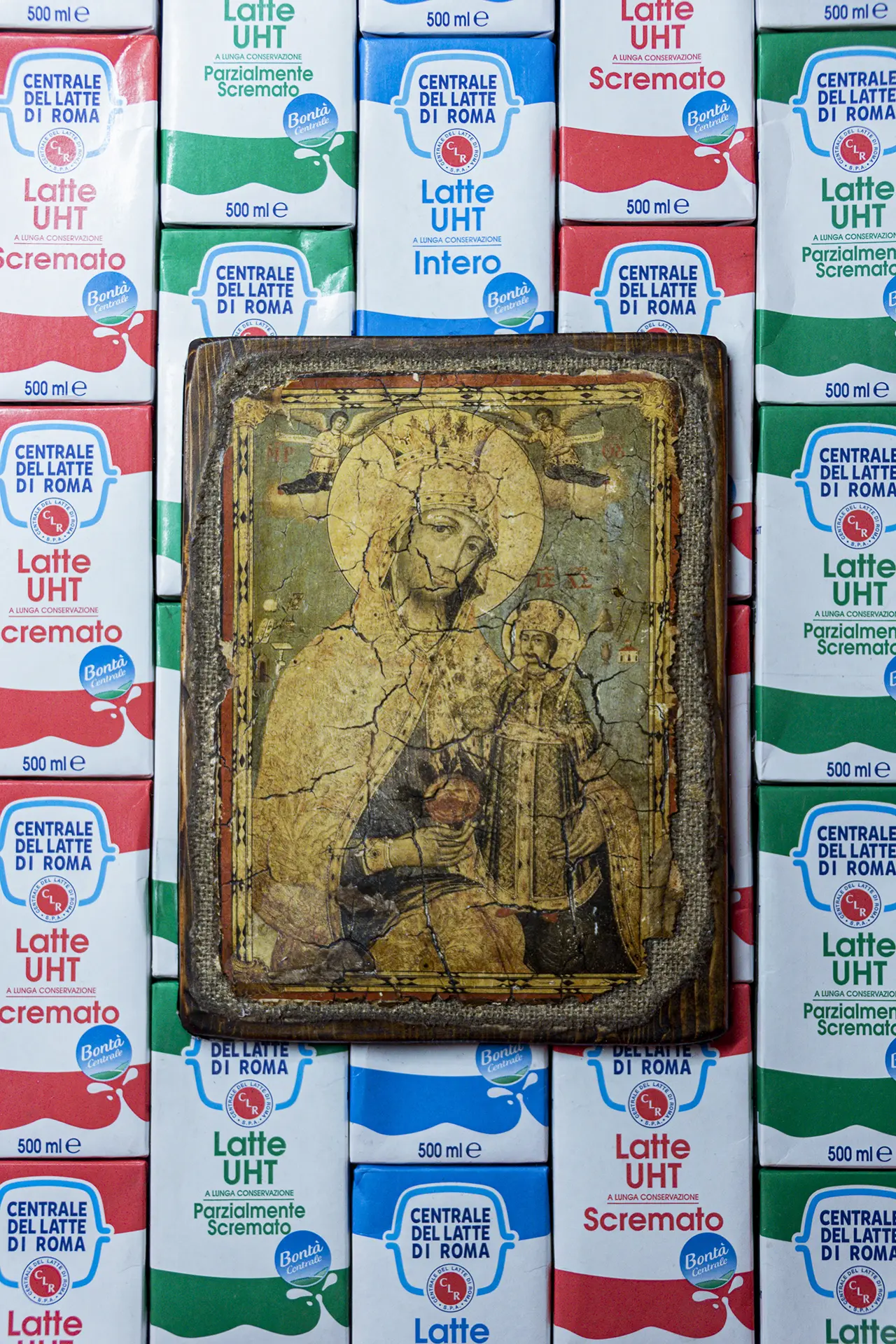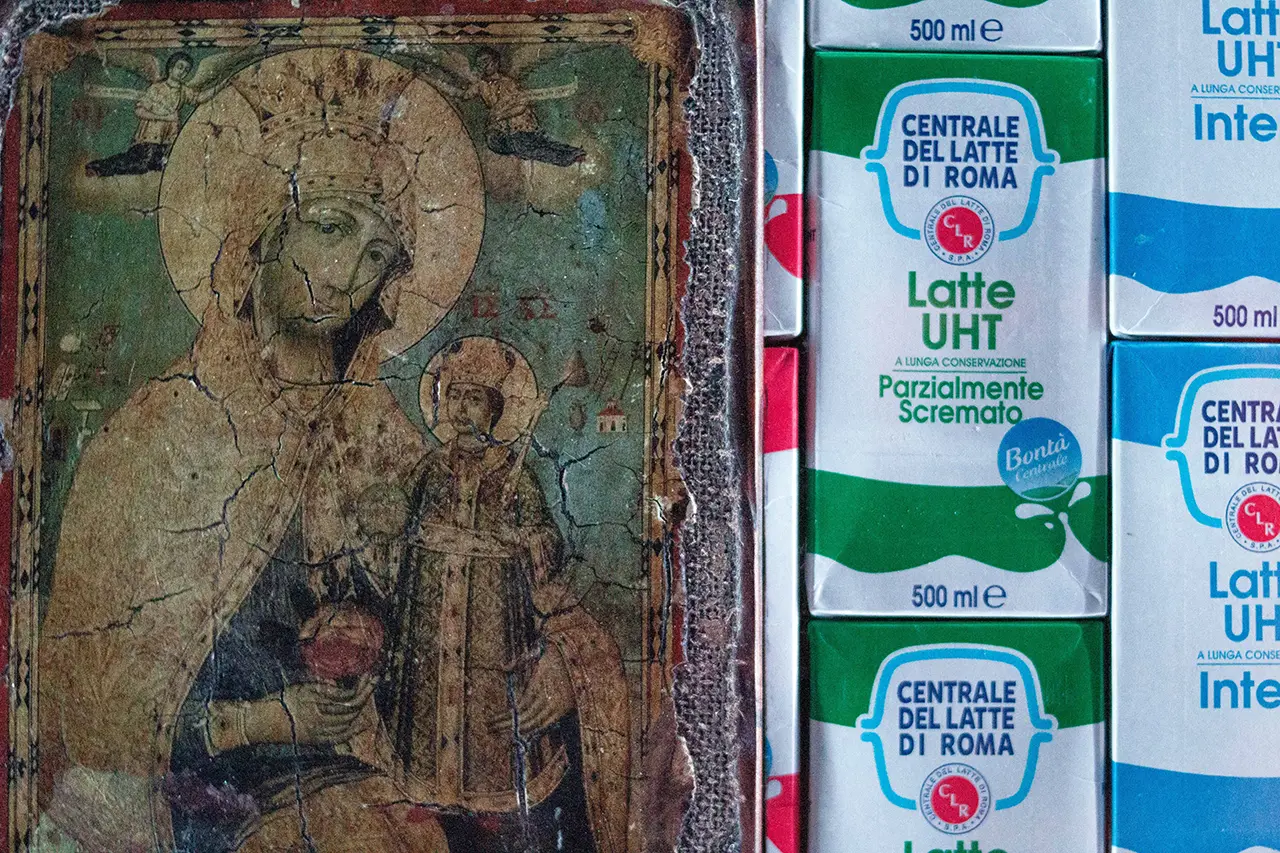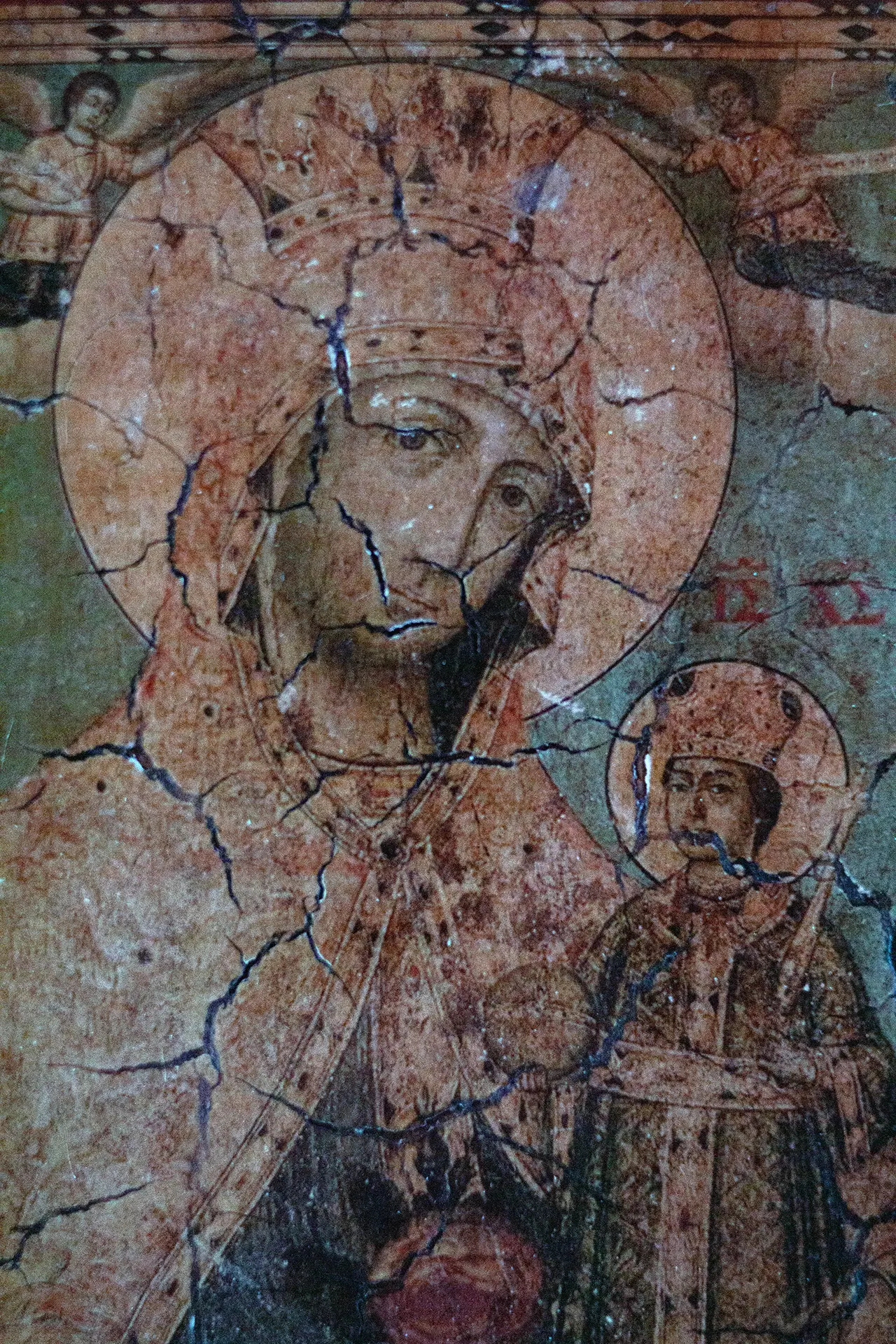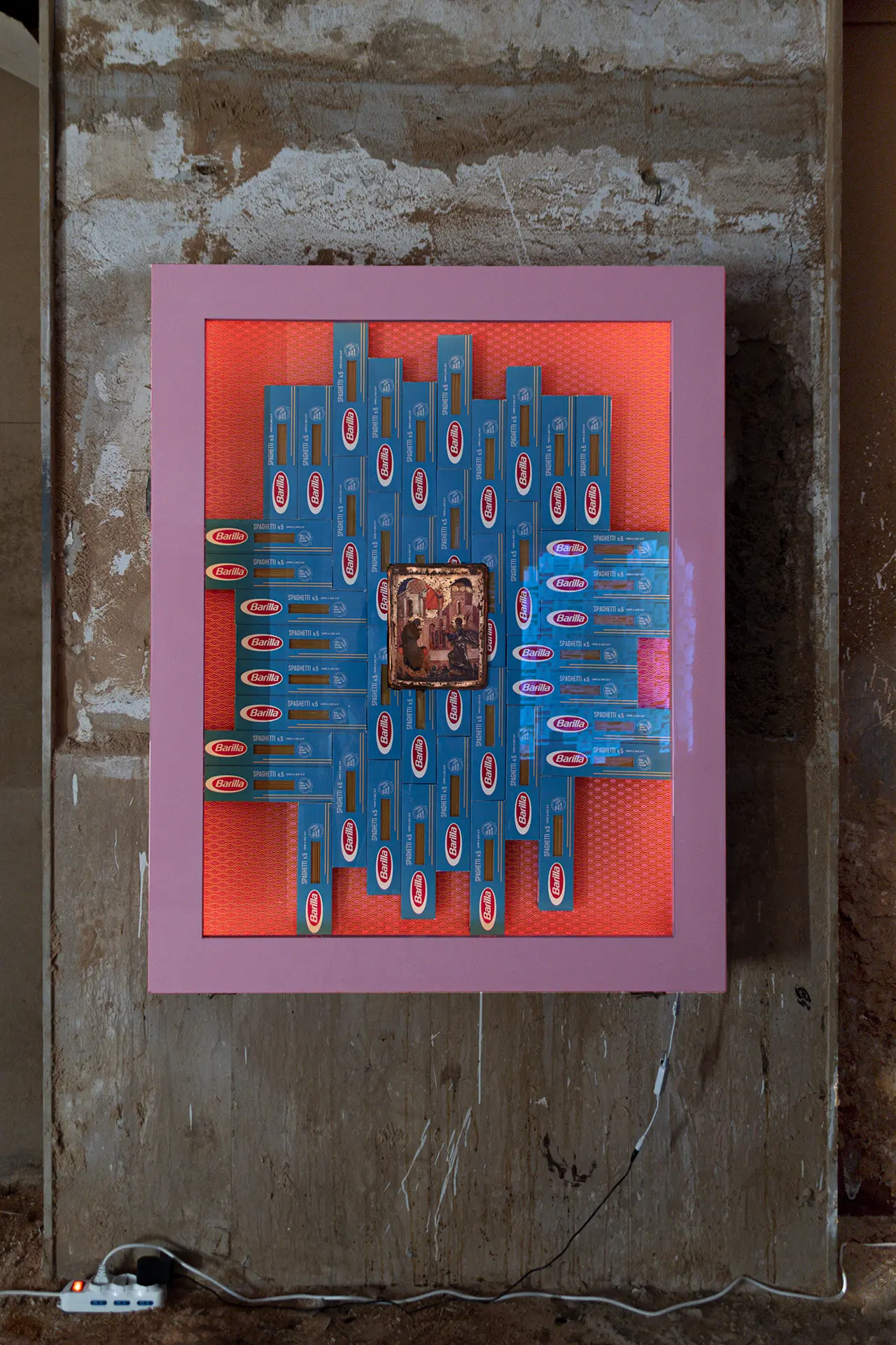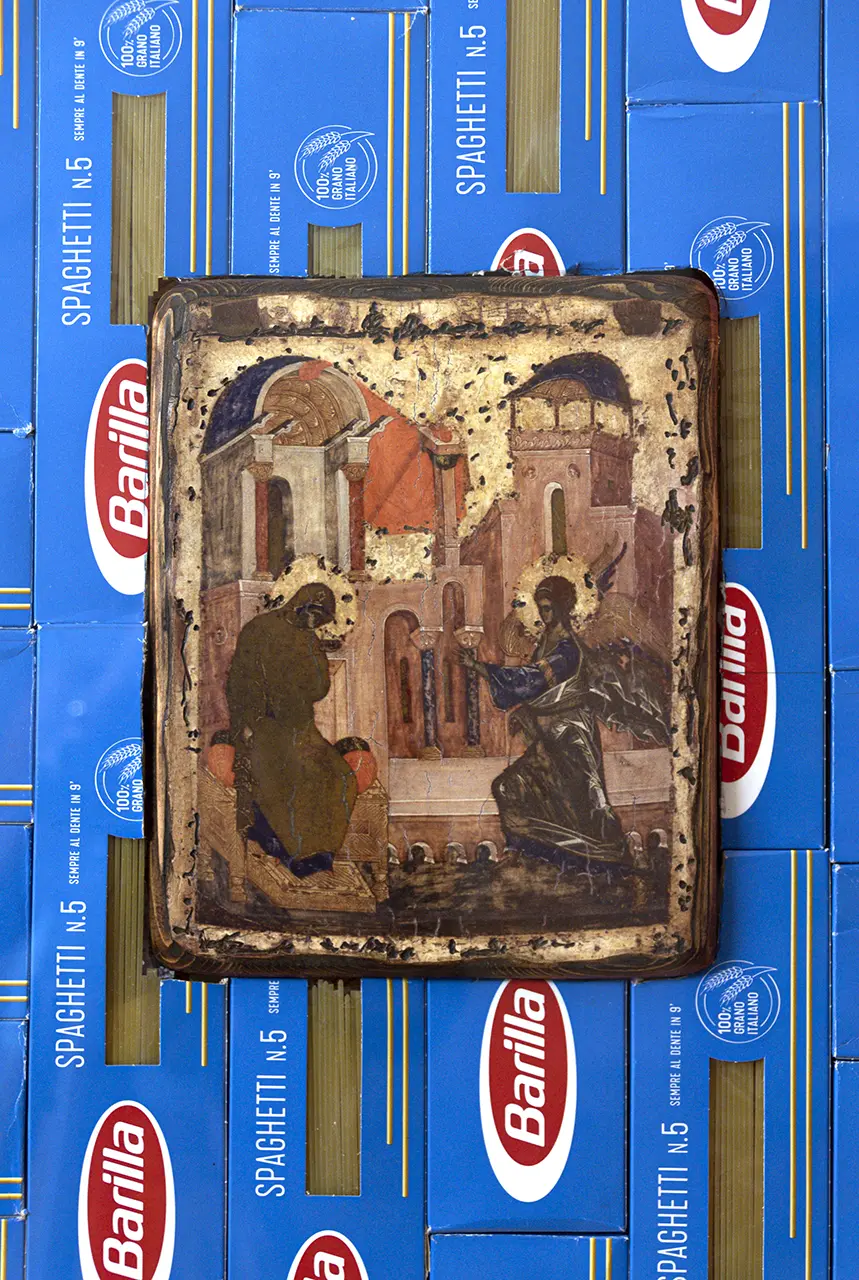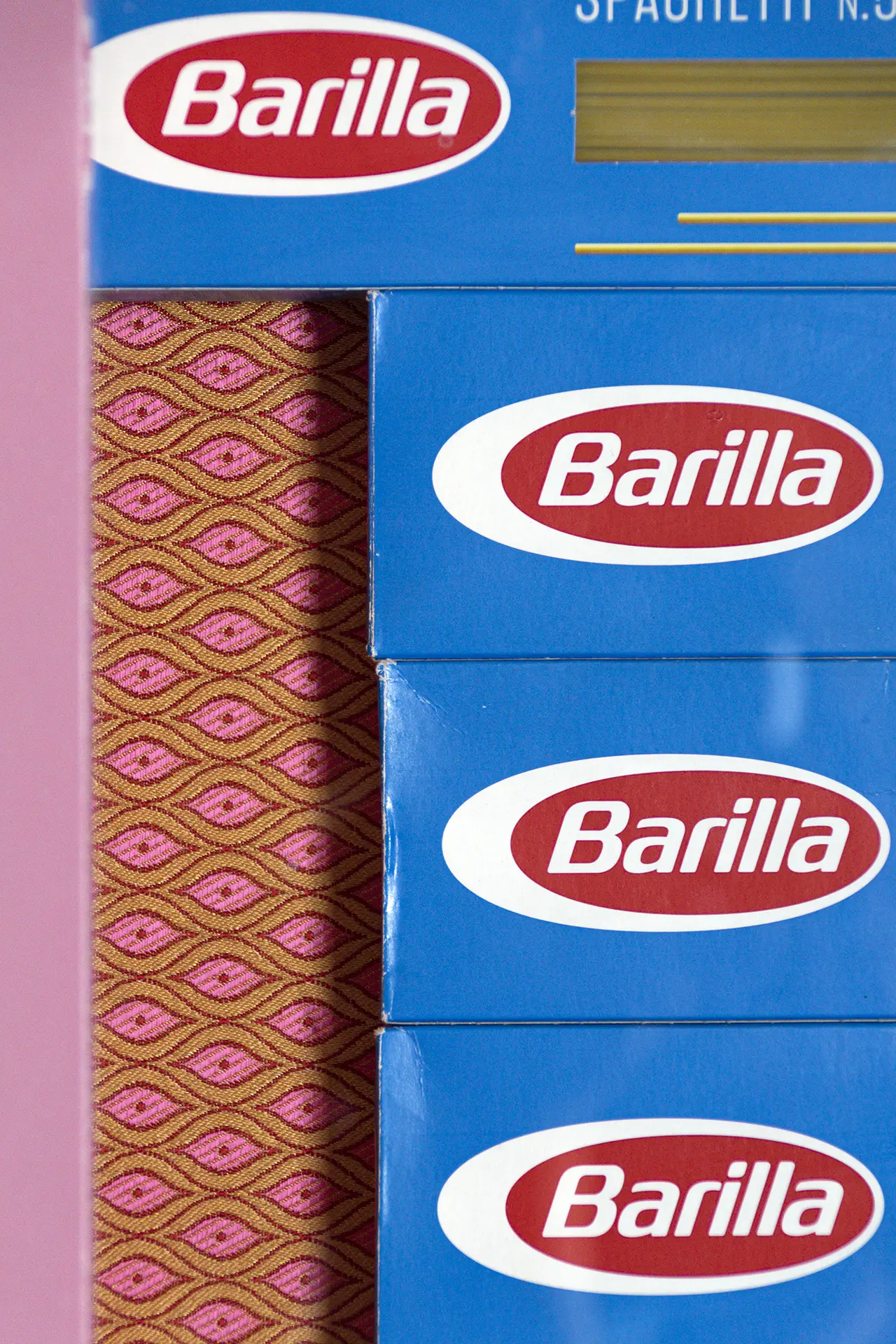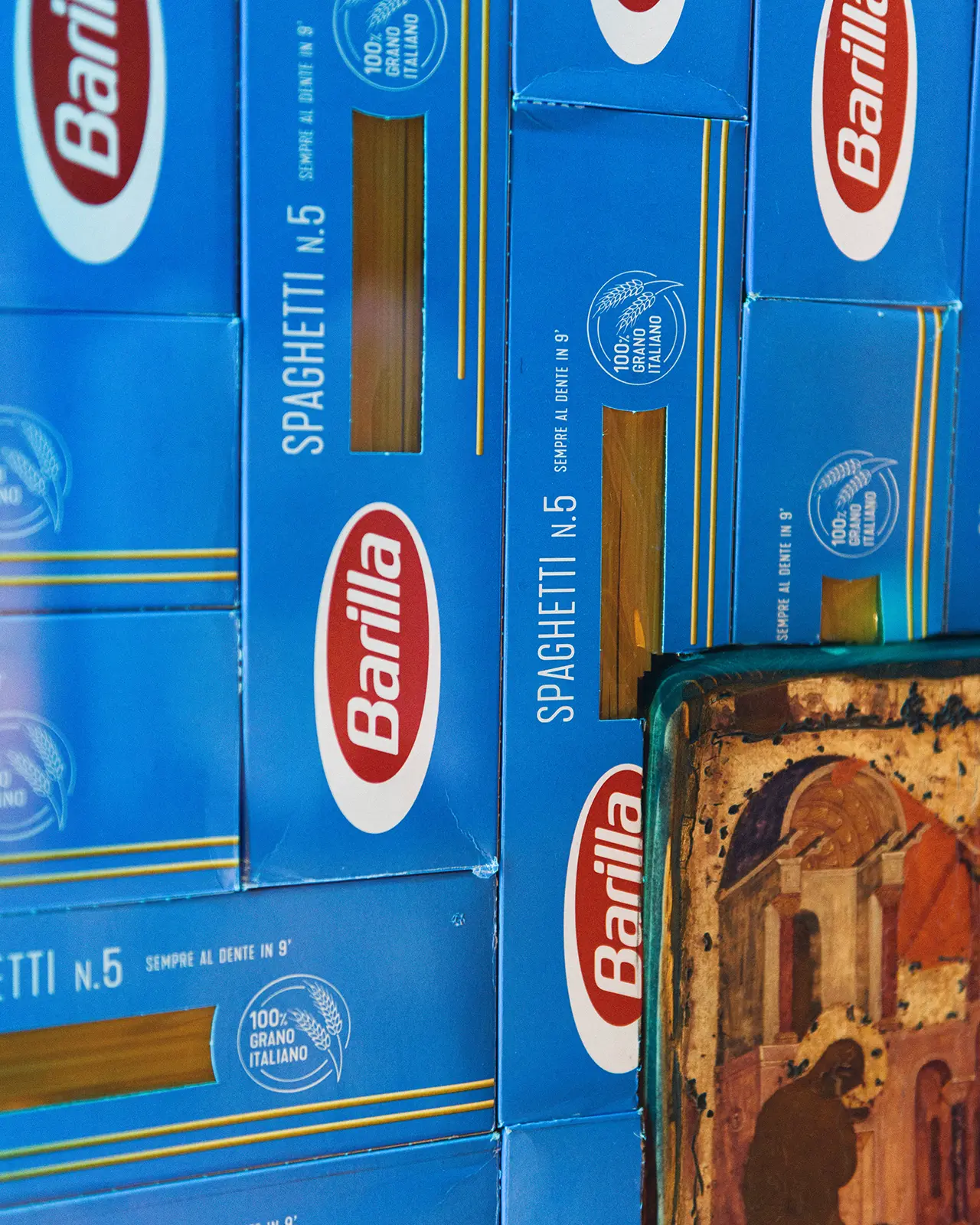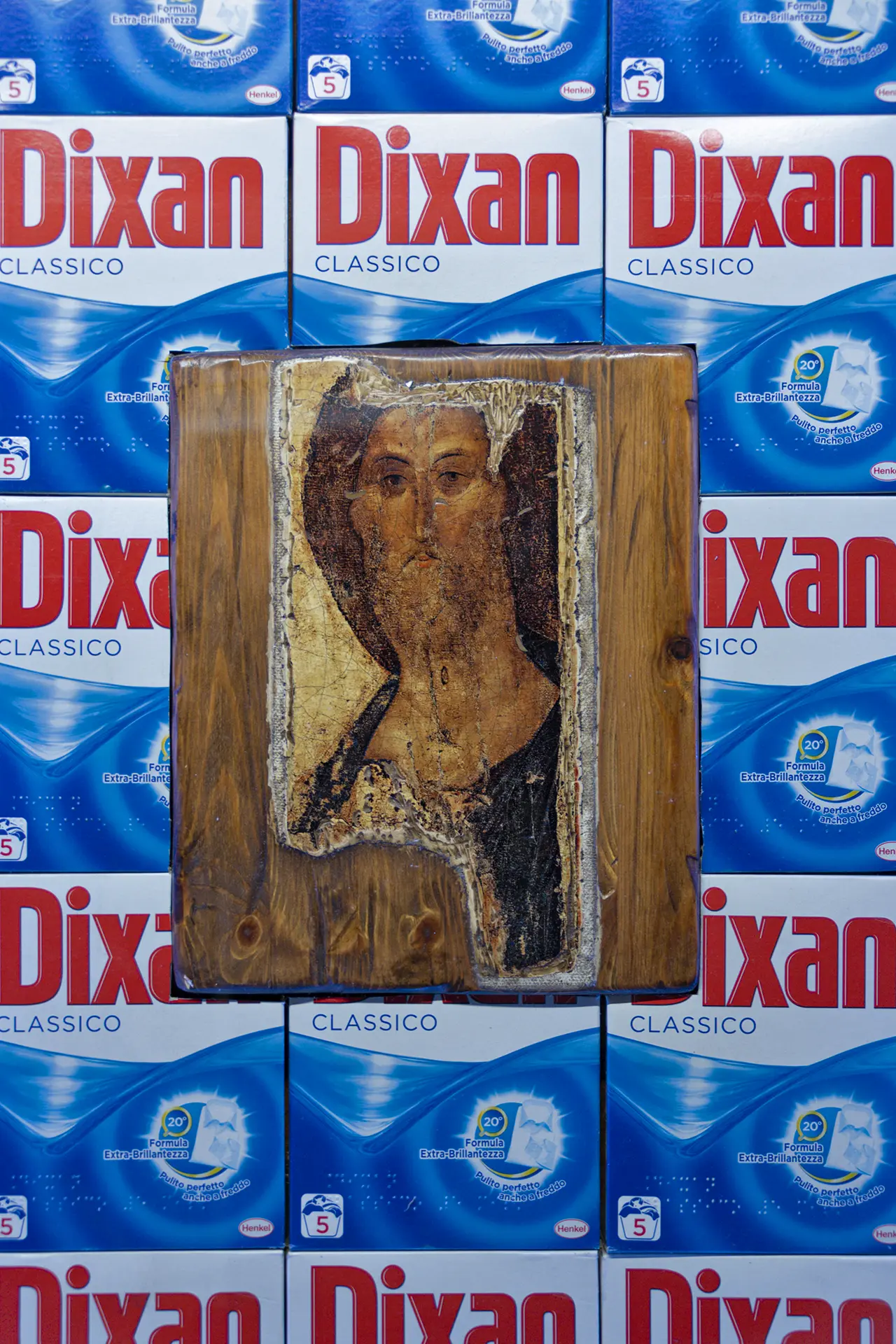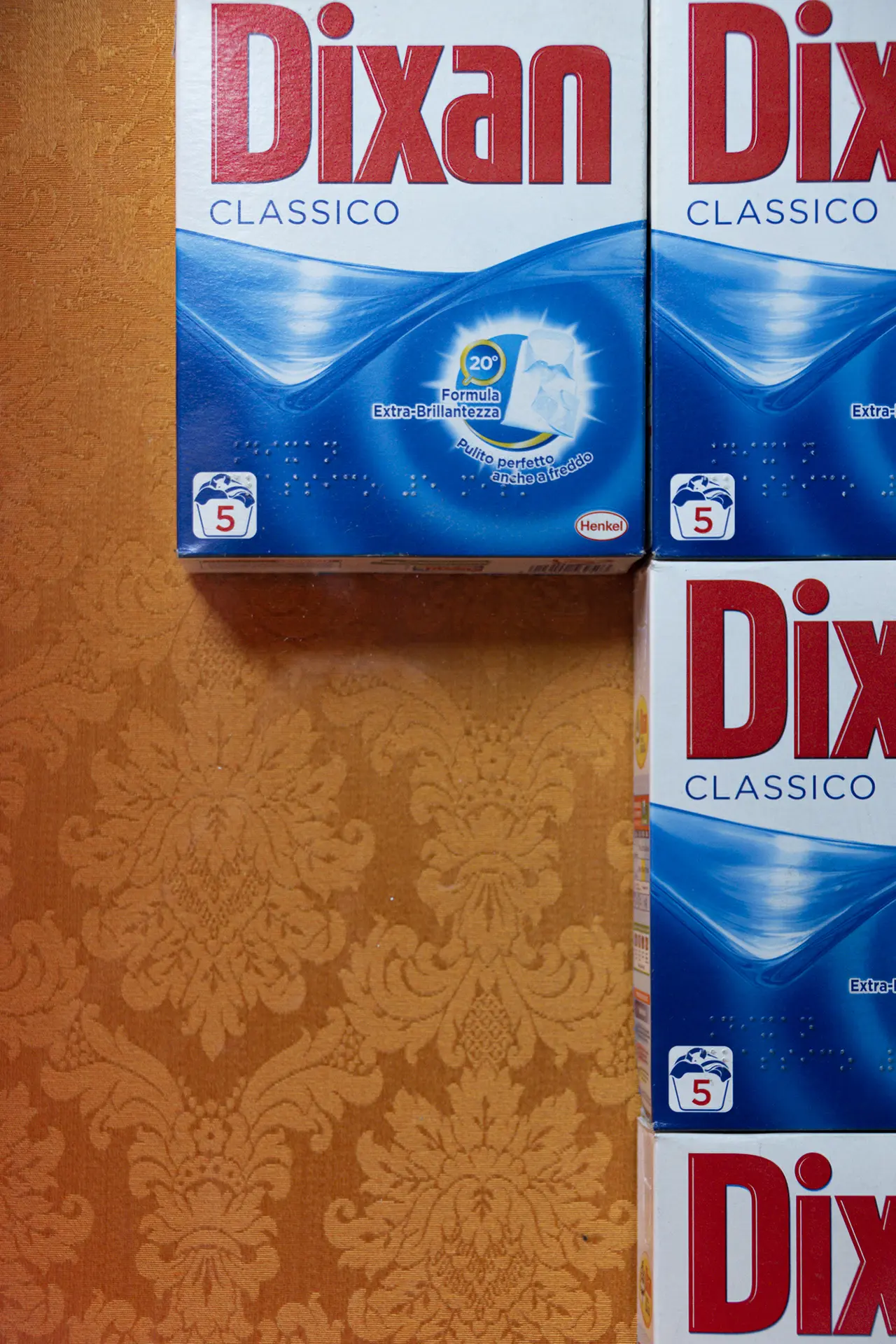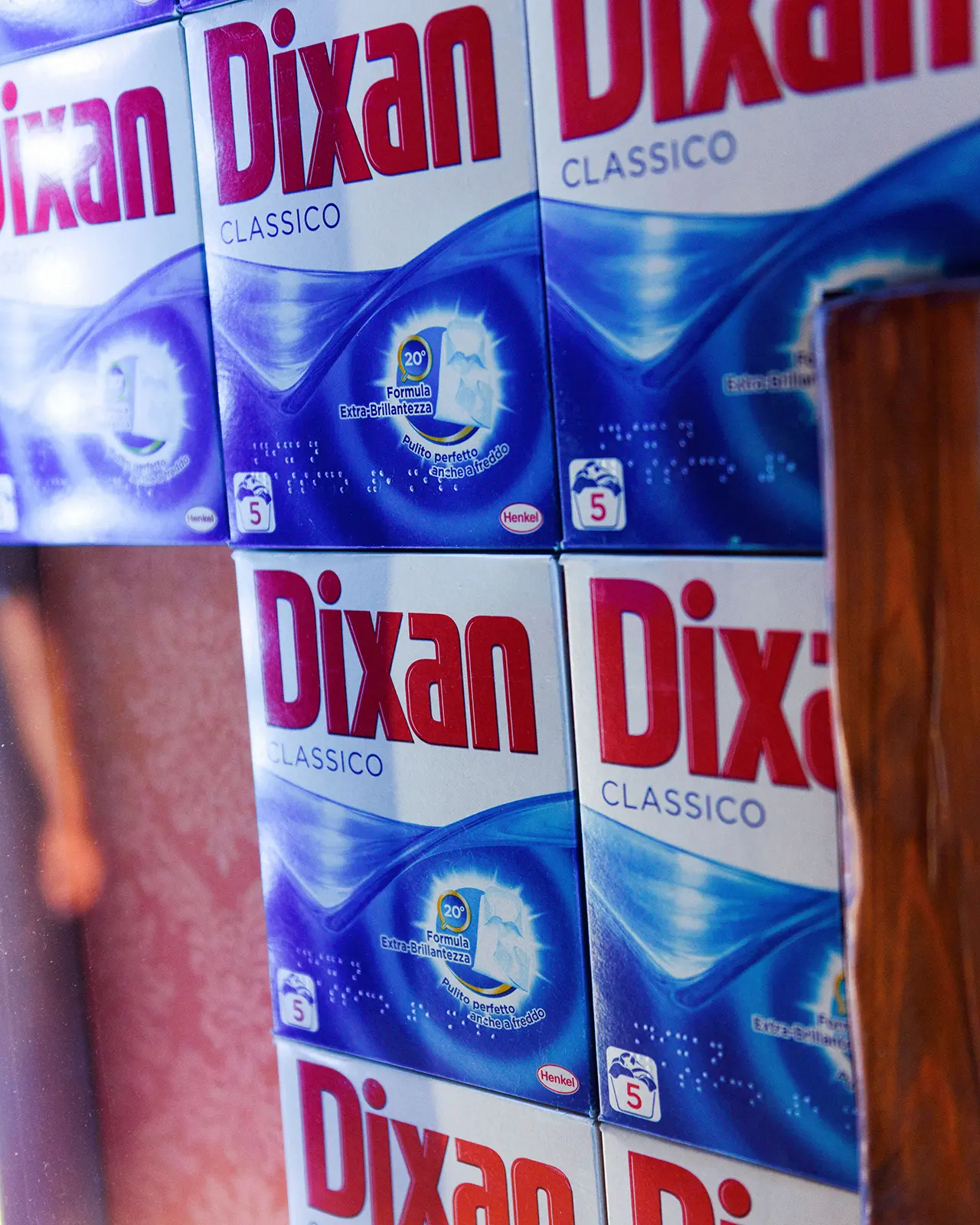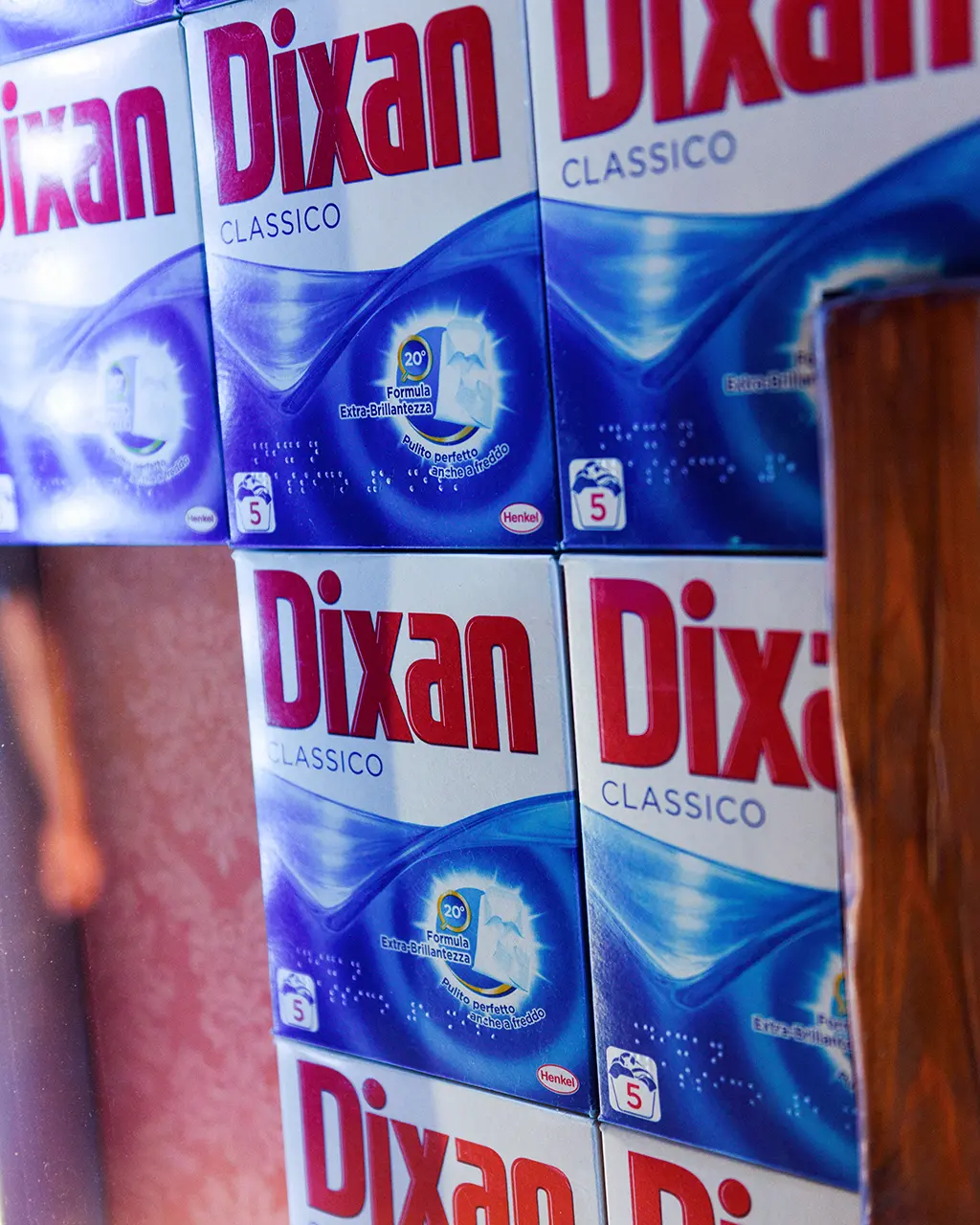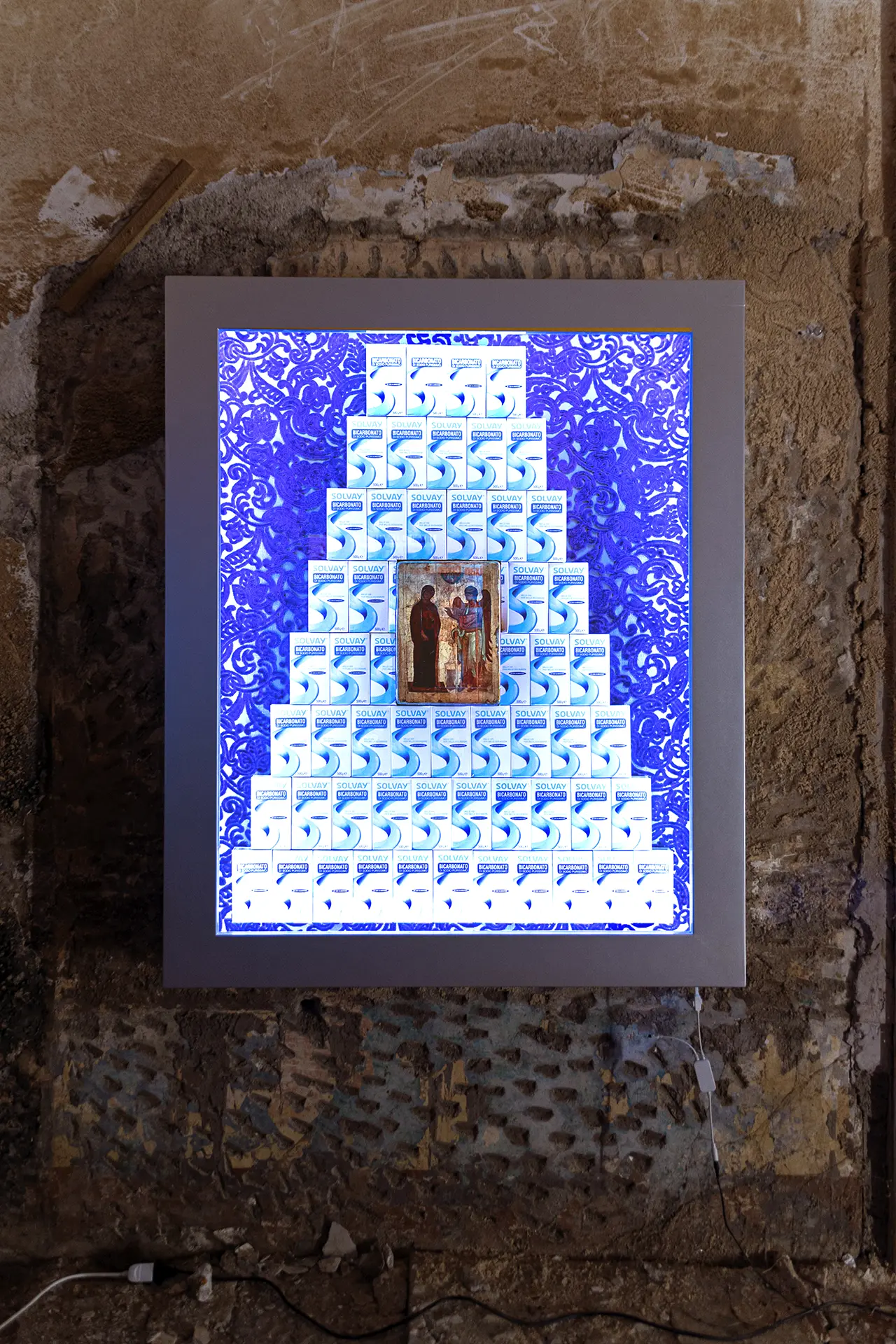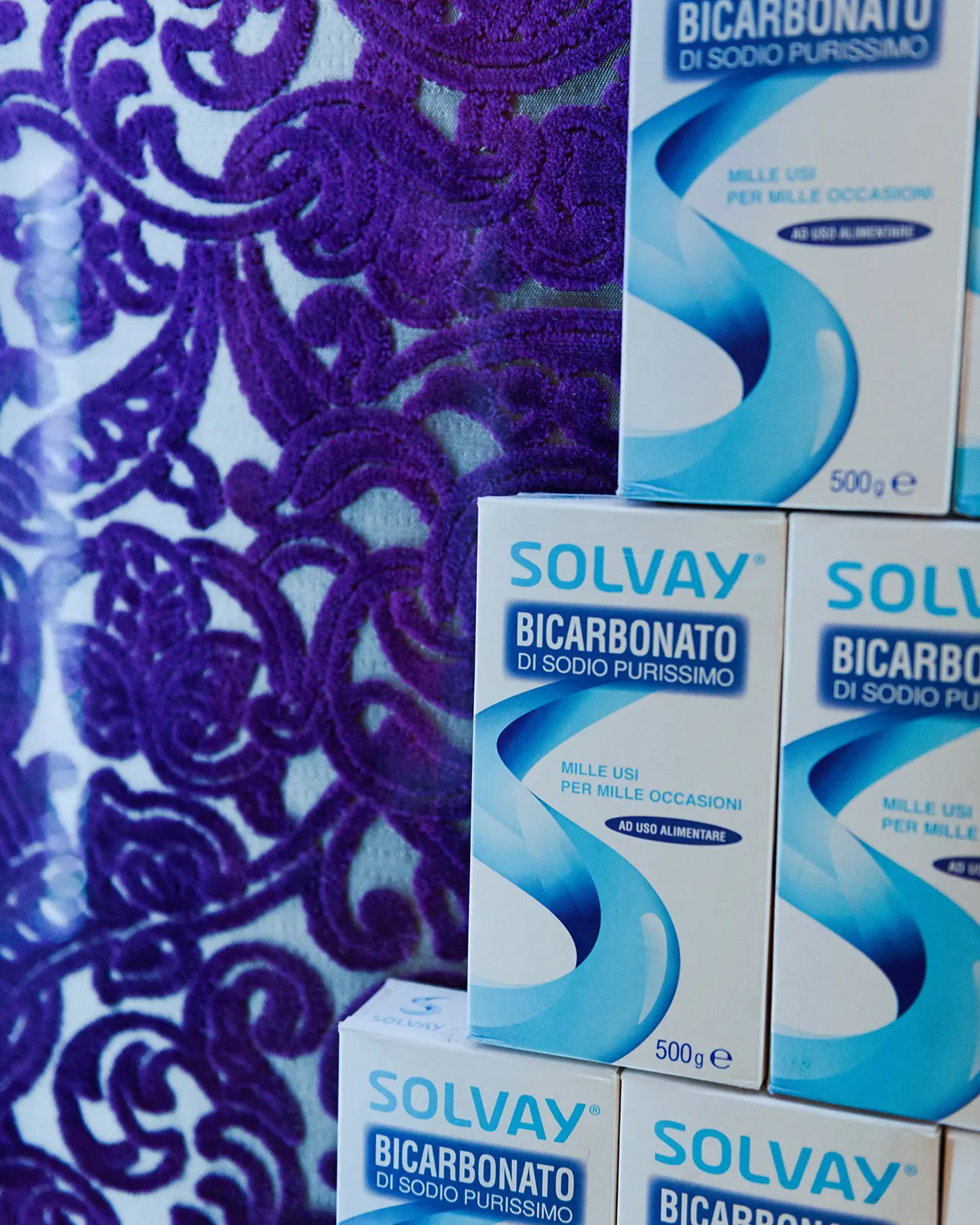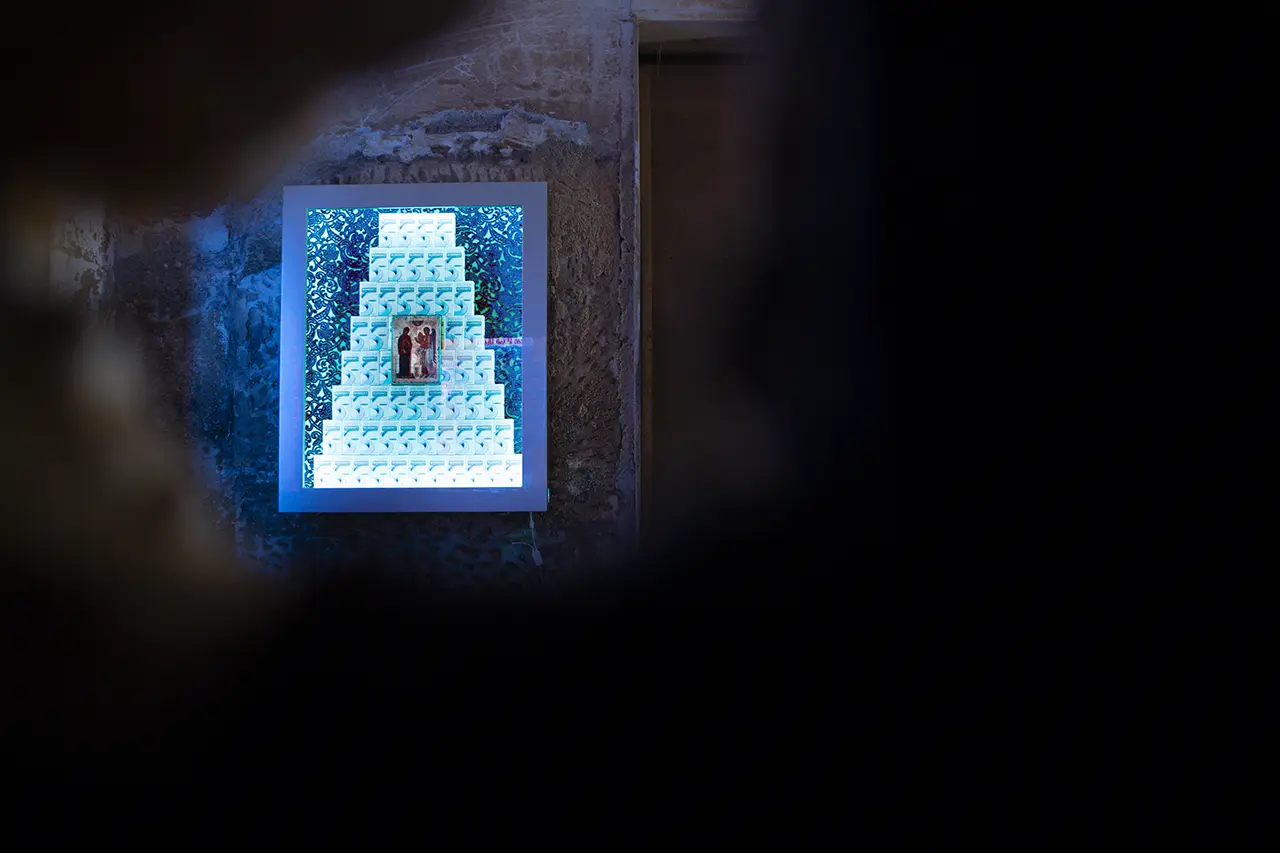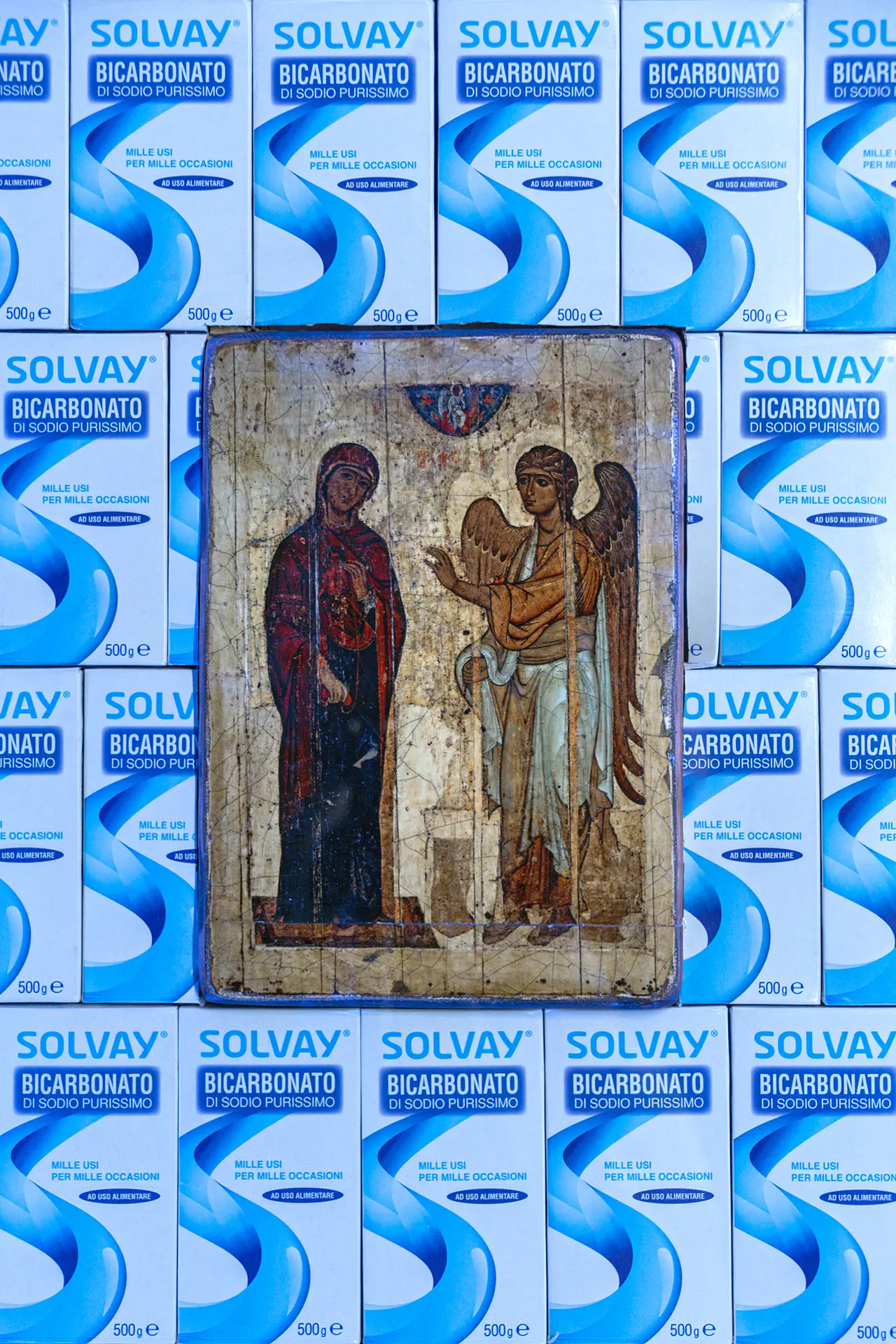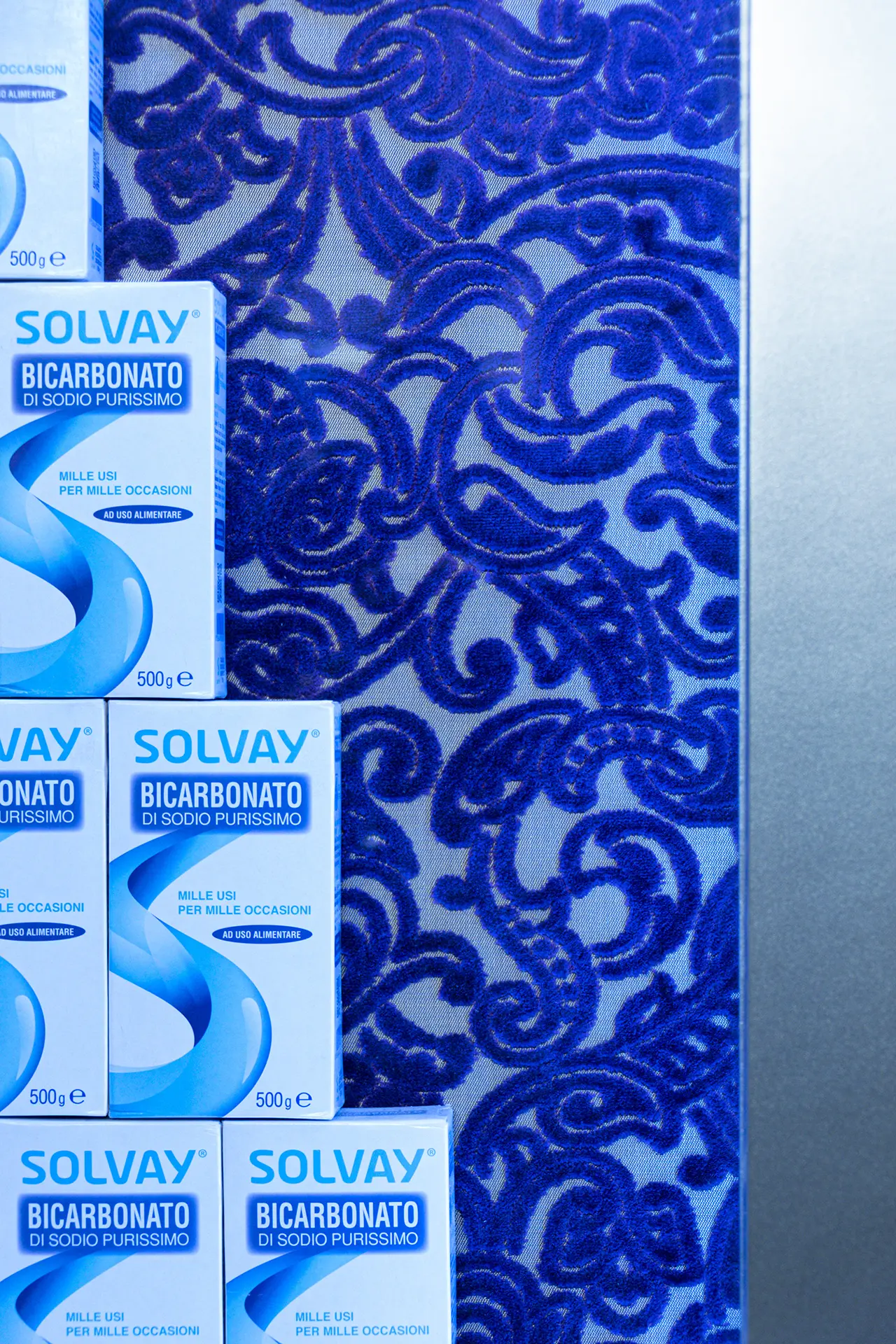2022 (2019)
Sacred Shrines
Re-interpretations of the ancient “aediculae” in a contemporary key.
This ongoing project counts so far eight sacred cases that rework the “edicola sacra”, a typical architectural element very common in Rome and in Christian-Latin cultures in general. The term derives from the Latin aedicula, diminutive of aedes (“temple”or “shrine”), hence a miniature temple, which housed a statue or the depiction of a deity. These sacred niches, also called “Madonnelle”, are an expression of popular faith and are realized after some miraculous event, a foiled calamity, a ceased epidemic, a sudden recovery. These luminous sanctuaries are generally found at streets intersections where there was no public lighting.
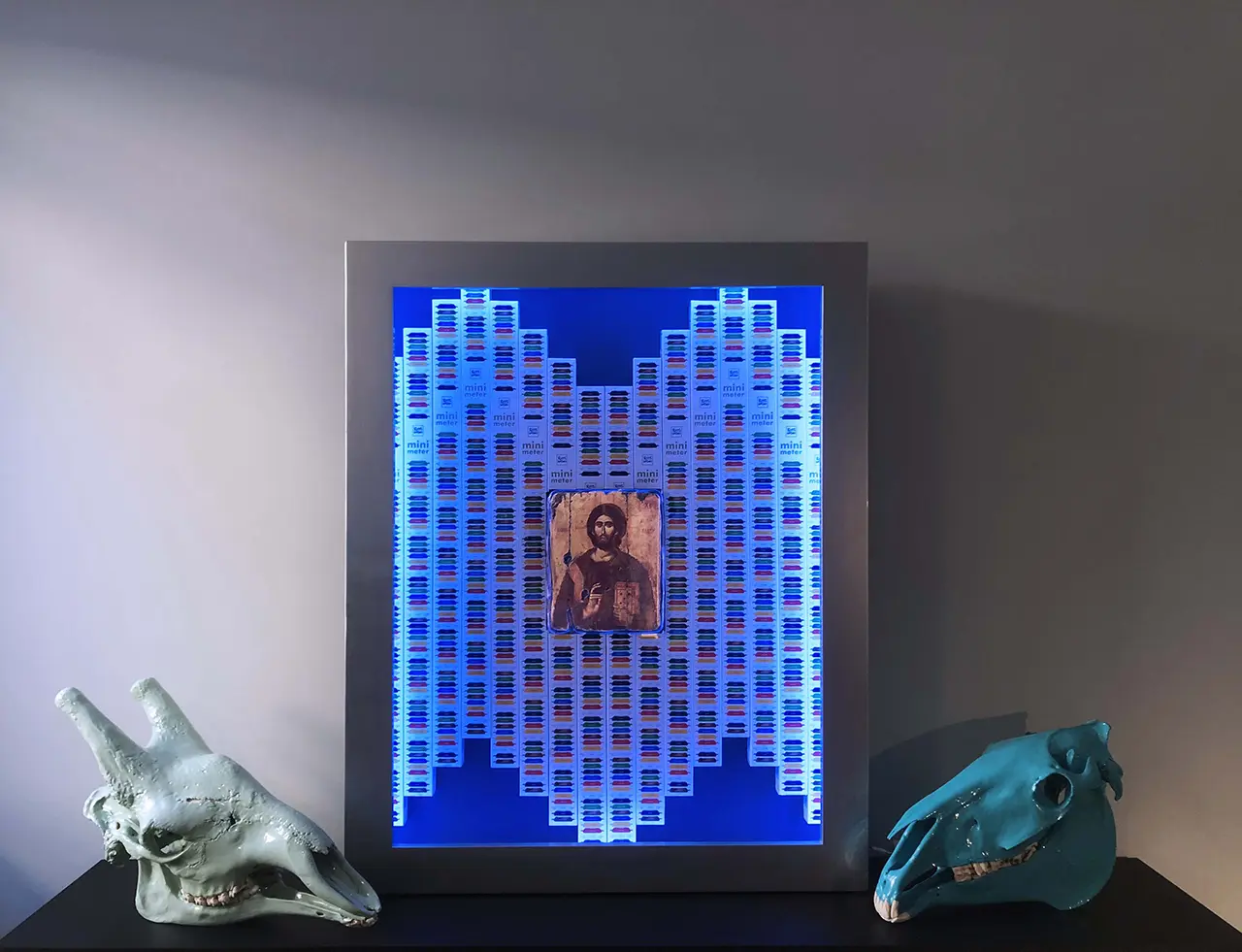
The first sacred shrine I realised, displayed with two Oracular Sculptures.
In my version, the sacred shrines contain different industrial products combined with Russian and Byzantine icons, with typical representations such as the Christ Pantocrator, the Madonna with Child, the “all-seeing eye of God” aka “the eye of Providence”. Multicolored LED strips illuminate the cases form inside, provoking different emotional states and recalling oriental folklore and the low-cost products of globalization sold via online platforms.
“Mini-Ritter” shrine 1/8
This is the first case I realised, exhibited during my first solo show Where is my sacred? (Pastificio Cerere, 2019), it displays 16 Ritter Sport Minimeter tube-packs in the center of which is placed a Russian icon depicting the Christ Pantocrator.
The apparent contrast of the elements ultimately reveals its coherence though many levels. The eminent philosopher Alfred North Whitehead has advanced the idea that the scientific vision of the world (and its techno-industrial organization), so deeply impressed in Western consciousness, has its roots in the theology of fifth-century Christians for which the human desire for order had found its fulfillment in Jesus, the incarnated Logos, the Reason and the Structure of the cosmos.
“Durex Invisible” shrine 2/3
This case displays 98 Durex “Invisible” iridescent ultra-thin six-condom pack, in the center of which I embedded a traditional Russian icon depicting the All-Seeying-Eye-Of-God aka the Eye of Providence.
Between sacred and profane, in the verge of blasphemy for some, yet I wonder – don’t we often summon God through our peaks towards the climax? Isn’t the inner look of the “ékstasis” the eminent way to see the “invisible” par excellence: the “deus absconditus”?
“Lines Intervallo” shrine 3/8
This case displays 61 beautifully designed Lines Intervallo panty liner package, in the middle of which I embedded a reproduction of the legendary byzantine icon Virgin of Vladimir (Eleusa), one of the most culturally significant and celebrated pieces of art in Russian history with several miracles of historical importance being attributed.
Although “immaculate”, yet I wanted to suggest the incarnation of God in the body of the baby Jesus through the flesh and blood and the generative power of the holy Mother (at same time, immaculate are promised to be the underwear, protected by the liners!). Also, through the patterns of the package, I tried to recreate a sort of DNA strips referring to a divine yet biological lineage. The concept of “Intervallo” in such a display offers different levels of interpretation through free associations.
“Riso D’uomo”shrine 4/8
This case displays 60 beautiful limited edition packagse made by a Milanese rice company, Riso D’Uomo, inspired by the actual floor of the Duomo di Milano, in three variations to which I associated the scene of the Annunciation.
The background is a green damask, typical “ecclesial” fabric, which in Christianity indicates the total regeneration of conscience, charity and hope. I have often been asked the reason for certain associations, but there is no real answer. The choice is determined by a combinatory of reasons I This case displays 60 beautiful limited edition packagse made by a Milanese rice company, Riso D’Uomo, inspired by the actual floor of the Duomo di Milano, in three variations to which I associated the scene of the Annunciation.
Someone, for example, told me that the Annunciation provokes man’s laughter (“riso d’uomo” in Italian), because he is fed, enriched, and gratified by the rice. Fair enough.
“Centrale del Latte” shrine 5/8
This case displays 77 long-life milk from the Centrale del Latte di Roma (the oldest milk factory in Italy) in the middle of which I embedded a reproduction of a byzantine Madonna and Child, one the most ancient representation of Christian art.
This iconography, often depicting a breast-feeding Mother, dates back to prehistoric civilizations, such as the Nuraghic one, but they become common only in Ancient Egypt, with Isis and Horus.
So it’s of course an image well-inbuilt in our archetypical subconscious. In my vision, large scale food industry of the affluent societies has replaced the feeding function of the Mother, even exacerbating its symbolism and psychological effects: the industry as a super-Mother (apparently) capable to provide infinite gratification to the somewhat “infantilized” hyperfed citizen-consumer. So this association may serve as a reminiscence.
“Barilla” shrine 6/8
This case displays 43 spaghetti Barilla N.5 packages in the middle of which I embedded a reproduction of Andrei Rublev’s Annunciation.The icon represents the announcement by the Archangel Gabriel to the Virgin Mary that the Son of God would become incarnate and enter into this world through her womb.
The red draped cloth signifies that a scene is taking place in an interior. Such a cloth is called by its Latin name “velum”. It interestingly dates back to the Greco-Roman theater of antiquity, in which a very large canvas could be stretched between supports to protect the audience or stage from the sun and from bad weather. A draped curtain was sometimes also used for interior sets.
So I played with this element, that suggest both domestic intimacy and theatrical set, inspired by the Italian Barilla’s payoff which recites: “Dove c’è Barilla, c’è casa.” (“Where there’s Barilla, there’s home”).
I chose Barilla brand because it has spread the Italian pasta religion all over the world, especially in North America. In 2013 the company has even opened some restaurants (“Casa Barilla”) in the United States: the first in New York, the second in California.
“Dixan” shrine 7/8
This case displays 33 Dixan laundry detergent packs in the middle of which I embedded a reproduction of Andrei Rublev’s most famed Christ the Redeemer icon.
The association of this product with this image is quite direct (Jesus washes the sins and so on…), yet surprisingly, while I was assembling the shrine, I came across a very interesting book by Italian essayist, writer and advertiser Bruno Ballardini “Jesus washes whiter” (2000) whose cover (photo 3) and content seem visual and conceptual extentions of my work.
Ballardini reads the Church as the oldest, biggest and most effective “advertising agency” and explains its five strategic marketing points:
- A logo recognizable by everyone: the cross.
- Sale points all over the planet: churches.
- Marketing and advertising campaigns wisely orchestrated by the Parent company for centuries.
- A revered CEO: the Pope.
- A “superior” product distributed free of charge: the doctrine.
“Solvey” shrine 8/8
This case displays 60 baking soda Solvey packages (the most popular in Italy) in the middle of which I embedded a reproduction of the Annunciation of Ustyug created by unknown artist between 1120–1140.
For the background I didn’t chose a typical religious damasked fabric as for the other “shrines”, but a purple velvet with rather trippy patterns, for me resembling the obscure mathematical orders hidden in the very elementary structure of nature.
The association you can make between the many functions of the baking soda (disinfect, whiten, alkalize, cure, prevent encrustations, stimulate the leavening, promote digestion, etc), with the Annunciation of God incarnating in the body of Christ through the womb of a young mother, are countless.
